- Website Inauguration Function.
- Vocational Placement Cell Inauguration
- Media Coverage.
- Certificate & Recommendations
- Privacy Policy
- Science Project Metric
- Social Studies 8 Class
- Computer Fundamentals
- Introduction to C++
- Programming Methodology
- Programming in C++
- Data structures
- Boolean Algebra
- Object Oriented Concepts
- Database Management Systems
- Open Source Software
- Operating System
- PHP Tutorials
- Earth Science
- Physical Science
- Sets & Functions
- Coordinate Geometry
- Mathematical Reasoning
- Statics and Probability
- Accountancy
- Business Studies
- Political Science
- English (Sr. Secondary)

Hindi (Sr. Secondary)
- Punjab (Sr. Secondary)
- Accountancy and Auditing
- Air Conditioning and Refrigeration Technology
- Automobile Technology
- Electrical Technology
- Electronics Technology
- Hotel Management and Catering Technology
- IT Application
- Marketing and Salesmanship
- Office Secretaryship
- Stenography
- Hindi Essays
- English Essays
Letter Writing
- Shorthand Dictation
Essay on “Dances of India” Complete Essay for Class 10, Class 12 and Graduation and other classes.
Dances of India
Essay No.01
Dance is a series of movements and steps that match the speed and rhythm of music. It is an artistic accompanied by gestures and expressions which explain the theme contained in the music. One can dance alone or with a partner or in a group. Rhythm and movements are basic to dance.
India has rich cultural tradition. Dance is a part of our rich cultural heritage. It is as varied as the land itself. it has an underlying unity which binds the people of the country to gather. The dances of India are an expression of an ancient civilization.
Dance in India has an unbroken tradition of over 2000 years. Its themes are derived from mythology legends and classical literature. There are two main forms of dances in India. These are folk dance and classical dance. They are not simply them movement of legs and arms but of the whole body.
Most of the classical dances were first conceived and nurtured in the temples. They attained their full stature there. Classical dance forms are based on ancient dance discipline. They have rigid rules of presentation.
Indian classical dances follow the principles and rules laid down by Bharat Muni n his Natyashastra many ages ago. There are 180 styles of Indian temples. Music dance and drama have been an integral part of Indian religious and secular life.
Of the classical dances of India five are famous all over the world. These are Bharat Natyam, Kathakali , Manipuri, Kathak and Moiniattam of Kerala. The concept of rasa holds the central place in dance. While dancing rasa is conveyed through bhava and abhinaya.
Bharat Natyam has derived its roots from Tamil Nandu. It has developed into an all India form. This dance is associated with lord shiva. Kathakali is a dance form of Kerala. The theme for the dance is drawn either from the Ramayana the Mahabharata the Puranas or the Vedas. Manipuri is a delicate lyrical style of dance of Manipur. It is based on the romance of the divine Krishna and Radha. Kathak is a major classical dance form of North India. This forks dance is revitalized as a result of Mughal influence on Indian culture. Orissa a dance form of Orissa was once practiced as a temple dances. Only dedanses could perform this dance in front of lord jagannath. Today It has developed into an all Indian form.
Folk dance is a traditional dance of the common people of a region. Indian folk dances have relatively greater free play expression of feelings emotions and sentiments than classical forms. The theme is connected with the performer life daily activities and the environment. The theme is also derived from nature in its various moods and seasons. Folk dances imbibe new influence and at the same maintain tradition and continuity.
The classical dances of India are usually spiritual in content whereas the main force behind the folk dances of India is the celebratory mood. Dances are a form of coherent expression of human feelings .these dances are not only the exclusive art of a particular community but an asset to India cultural heritage.
Both classical and folk dances owe their present popularity to institutions like sangeet natak academy and other training institutes and cultural organizations. Sangeet natak akademi gives financial assistance o f culture institutions. It also aware fellowships to scholars performers a teachers. This is to promotes advanced study an training in different forms of dances and music.
Some western dance forms are also in vogue in India. The young generation has their bent of mind towards these forms. For young people dance is only a bodily expression of joy and happiness. Weston dance forms are very popular in many late night clubs dance bars and pubs which have been opened in cities. However such dance forms cannot claim to be a part of Indian art or culture.
Dance is a highly developed art which needs immense Discipline and years of training. Many people have adopted various forms of dance as their profession and have earned great fame in their chosen field. many dance troupes exhibit this skill in India and abroad and win laurels. We should consider dance as an art and a part of our cultural heritage.
Essay No. 02
Indian Dances
When man’s soul urges and inner drives are expressed in rhythmic body movements, it is called dance. Man is destined to dance his way to higher and still higher levels of consciousness and evolution. The aesthetic foundations of Indian dances are laid on the rock foundations of spiritual sadhana. Lord Shiva, the Natraj, is said to be originator of dance. He is also the Supreme Dancer. His cosmic dance is very famous. His Tandava reflects his violent nature as a stern judge and upholder of justice and righteousness. He dances, both in sorrow and joy, as the god of rhythm and movement. He performs his Cosmic Tandava dance at the termination of the age.
Indian dances are famous all over the world. They have changed little through all these centuries and the dancers perform their dance recitals according to the traditional precepts enshrined in Bharata’s Natyashasta a There are said to be 180 styles of dancing, and 101 of these are described in the Natyashastra. Many of these dance styles can be seen depicted on the walls and pillars of some of the famous Indian Temples. Music, dance and drama have been an integral part of Indian religion and secular life. Indian dances are not simply a things of legs and limbs but of the whole body and soul. They are highly developed and stylised and so have changed little in technique. They strictly adhere to the principles and rules laid down by Bharat Muni’ s Natyashastra, they along with variegated folk forms, present a panoramic and spectacular view of splendid and continuous dance tradition in India. Their history, sprawling from the pre-historic antiquity down to our own days, makes a fascinating reading. Indian dances, a proud and magnificent heritage of India, are a phenomenon to be enjoyed, seen and to be participated.
Of the classical Indian dances the five are very famous. They are Bharata Natyam, Kathakali, Kathak, Manipuri and Odissi. In the subtle Bharata Natyam, popular in the south India, feeling (bhava), raga (melody) and rhythm (tala) play the most vital role. It is the oldest dance style and is associated with Lord Shiva. It is a solo dance and most complicated to be understood fully by a lay man. Preserved in its prestine glory and unalloyed purity in Tamil Nadu, it enjoys today a very wide currency and popularity. For centuries in medieval India it was performed by Devadasis or handmaids of gods in the exquisite temples of South India.
Bharat Natyarn’s three components—movement, music and mime contribute equally in its performance. Basically it is a solo lasya, that is, tender and erotic dance, generally per-formed by a danseuse and occasionally by a danseur. No doubt it is based on the theme of love, but it is invariably devotional in essence and never sensual. During its performance it evolves like a bud into a blossom gradually through many stages. The final stage is very fine example of pure and abstract dance full of fascinating movements and rhythms accompanied and governed by the scintillating music. It presents a complex pattern of pure dance. The dancer conjures up intricate images of dance and footwork with statusque poses. It concludes with the chanting of a Sloka. In short, no other dance form can surpass Bharata Natyam and a few can equal it in its delicacy, grace, consummation and richness.
Kathakali is fundamentally of epic dimensions. Its universal appeal and popularity is an established fact. Its epic dimensions finally merge into cosmic ones, It is performed in an open air in a temple compound or a village courtyard. The only lighting used is a tall and massive brass lamp fed with coconut oil and set in front of the actors at the centre of the stage. It is accompanied by continuous thundering of the drums. It begins with the invocation of gods and lowering of a curtain held by two men. The themes of the dance are generally from the Ramayana, the Mahabharata, the Puranas or the Vedas. This dance-play continue all through the night. The facial vocabulary plays a very significant role in the portrayal of the subtlest passions with such perfection as transport the spectators to the magic world of myths, legends and fairies. Traditionally, young boys perform female roles. Kathakali costumes are traditional, gorgeous, spectacular, varied, ostentatious, and ornamental.
Kathak is a major classical dance form of North India dance both by men and women. It is well known for its spontaneity, freedom from uniformity and a lot of room for innovations and improvisations. It enjoys a fair amount of individuality and autonomy. A kathak dancer can change his or her sequence of stages to suit individual style and aptitude. Kathak makes a great use of a number of Hindustani musical compositions like Dhrupad, Hori, Dhama, Pad, Bhajan, Thumari, Ghazal, Dadra, etc. It also begins with invocation to gods. There is a rich variety in its repertoire as far as expression of feelings and passions is concerned. In an expressional dance the performer combines mime with music and dance and interprets the song to the accompaniment of soft music of the sarangi or a sitar. The song either in Braj, Hindi or Hindustani may be sacred, secular, devotional or erotic.
Manipur, bordering Burma, is a picturesque Indian state. Its famous dance form is called Manipuri. Rasa-dance which is full of devotional favour, and is performed to the singing of songs and kirtans and to the accompaniment of such musical instruments as khol or mridange (drum), manjira (cymbals) and a bamboo flute. Its liquid beauty, lyrical quality, re-strained but rhythmic swaying, swinging and spinning, coupled with soft vocal and instrumental devotional music, defies description. The text or songs accompanying Manipuri dance are from great saint, lyricists like Jayadeva, Vidyapati, Chandidas or the Bhagavatapuran. The costume of the Manipur dancers is always rich, ornamented and extremely captivating. Odissi, the dance form of Orissa, is the highly inspired, impassioned, ecstatic and sensuous. In medieval times this dance was performed by the Devadasis called Maharis in the temples. Rooted deeply in traditions and rituals, the dance is very old though its name is new. It commences with invocation to gods to the accompaniment of rhythmic vocal syllables blended into drum beats. The chant of the musician, the beat of the drum and the lilting and measured feet movements of the danseuse are so harmonized and produce a fine balance between the danseuse and the dancer, and the spectators are ushered into a fascinating world of mime, music and motifs reflecting sculpture stances. It represents a fine synthesis of Lasya and Tandava styles of Indian classical dances. It is an idiom which transcends all the limits of communication leading to rich aesthetic and spiritual experience.
Indian folk and tribal dances are fine examples of creative creations. They lack stylisation, refinement and artificiality. Folk and tribal dance forms cover various styles and forms originated, developed and maintained by the villagers, farmers, peasants, fishermen, and shepherds, nomads and tribals. These are out and out for pleasure and enjoyment. They are characterized most by their spontaneity, collective impulse and participation, simplicity, freshness and lack of restraint. Their richness, multiplicity diversity and variety is a thing of great wonder and no less admiration. They are at once thoroughly social, religious, ceremonial, seasonal, martial and ritual, always inspired by mythology, legends, religion and primitive instincts.
Essay No. 03
Man’s spiritual urge and inner drive manifested in rhythmic body movement constitute an art form called dance. Thus, rhythm and movements are basic to dance, creation and existence. Men, birds, beasts, plants, and the earth, all are engaged in a ceaseless cosmic dance-recital. Rhythm and movement is life, and its cessation stagnation, decay and death. Dance symbolizes both evolution and involution. Recent researches have revealed that distant galaxies are dancing away from us at an immense speed, some of them at the rate of about 144,000 km per second. Man is destined to dance his way to higher levels of consciousness and evolution till he achieves fullness, fulfillment and perfection.
It is in this background that Indian dances can be best appreciated and understood. The aesthetic foundations of the Indian dances and other art-forms are laid on the rocks of spiritual sadhana and rigorous mental and physical discipline leading to liberation, however, fleeting and momentary in the beginning. In essence, Indian dances are deeply religious in their origin. They do not simply involve legs and limbs, but the whole body and soul.
Indian classical dances are highly developed and stylised and have changed little in their technique, and yet they are innovative. By and large, they strictly adhere to the principles and rules laid down by Bharat Muni in his Natyashastra many ages ago. They, along with no less fascinating and variegated folk-forms, present a panoramic and spectacular view of splendid and continuous dance tradition of the country. Their history, spanning from the prehistoric times to the present, makes a fascinating study and reading. Indian dances, particularly the classical dances, are famous all over the world. There are said to be 180 styles of Indian dancing, and 101 of these are described in the Natyashastra. Most of these dance-styles can be seen depicted on the walls and pillars of some of the famous Indian temples. Music; dance and drama have been integral parts of Indian religion and life.
Of the classical dances, the five very famous ones are:
(i) Bharat Natyam
(ii) Kathakali
(iii) Manipuri
(iv) Kathak
Bharat Natyam is popular in south India. Feeling, raga and rhythm play a most crucial role in this dance form. It is the oldest dance-form and is associated with Lord Shiva. It is a solo dance, and most complicated and subtle to be understood and appreciated by a layman. Preserved in its pristine glory and unalloyed purity in Tamil Nadu, it enjoys very wide currency and popularity in India. For centuries in medieval India, it was performed by Devadasis or handmaids of gods in the exquisite temples of south India. The Devadasis were then held in high esteem as repositories of culture and performing arts.
Bharat Natyam’s three components—movement, mime and music—contribute equally in performance and recital. It is also a tender and erotic dance, generally performed by a female dancer and sometimes by a male dancer as well. No doubt it is based on the theme of love, romance and heroism but it is invariably devotional in essence and never sensual. It is equally and evenly divided into nritta (abstract dance) and nritya (expressive dance). It is presented in such a way that it upholds itself in a sequence of stages like a bud bursting into a blossom of unmatched beauty, colour, fascination and splendor. The artist performing Bharat Natyam wears a costume which is both traditional as well as functional. A wide variety of beautiful ornaments are also used.
Kathakali, the traditional story-play of kaleidoscopic Kerala, was evolved and nurtured in temples, just like Bharat Natyam. It is also known as Attakatha (dance-play) and is fundamentally of epic dimensions. Its journey from temples to courts and then to streets, courtyards and public places in Kerala tell its ever-increasing universal appeal and popularity. Kathakali is performed in open air, on a square stage with a tall and massive brass lamp, fed with coconut oil, set in front of the dancers at the centre of the stage. This is the only lighting used. The continuous thundering of the drum called chenda heralds the performance of the Kathakali dance-drama. The theme to be enacted and danced may either be from the Ramayana, the Mahabharata, the Puranas, or the Vedas. It continues all through the night, to the accompaniment of singing, drumming and playing on the large bronze cymbals. Traditionally, young boys perform female roles, but now girls and women also perform female roles. The prospective Kathakali dancers are caught young and initiated ritually in the art at the tender age of 10-12 and made to undergo a rigorous and intensive training and discipline under a skilled guru or master. The costumes are traditional, gorgeous, spectacular, varied, ostentatious, ornamental and yet functional. Eyes play an exceptional role in this style of dance.
Manipuri dances are based on the romance of divine Krishna and Radha. It was Maharaja Jai Singh, also known as Bhagy Chandra, who helped to develop and patronise this dance form. His daughter Princess Bimba-manjari was a dancer par excellence of. this style. It was subsequently formalised, codified and stylised on classical lines by great gurus of the art. The Rasa-dances are always related to Krishna legends and the movements of the neck, the breasts and hips are not allowed in this dance as they are considered vulgar and below the dignity and grandeur of these devotional forms of dance. The text of the accompanying songs is always from great saint-poets like Jayadeva, Vidyapati, Chandidas or from the Bhaguat Purana. The costume is always rich, ornamental and captivating. Rich in emotional content and sentiment of love, Manipuri dances require arduous training and discipline of the artist from a very tender age under the guidance of expert gurus. Truly classical, devotional and religious in spirit, these are performed to the singing of songs and kirtans and to the accompaniment of khol, niridanga, manjira and bamboo flutes. Their liquid beauty, lyrical quality, restrained and rhythmic swaying, swinging and spinning, with hands close to the body, coupled with soft music, lend the performance a uniqueness and divinity which defy description.
Kathak, a major classical dance form of north India, is performed both by men and women. It is well-known for its spontaneity, freedom from uniformity, and has a lot of room for innovation and improvisation. It enjoys a fair amount of individuality and autonomy. A kathak dancer can change his or her sequence of stages to suit individual style and aptitude. Kathak makes a great use of a number of Hindustani musical compositions like Dhrupad, Hori, Dhamal, Pad, Bhajan, Thumri, Ghazal, and Dadra, etc. It may also begin with an invocation of gods. There is a rich variety in repertoire as far as expression of feelings and passions are concerned. In an expressional dance, the artist combines mime with music and dance and interprets the song to the accompaniment of soft music of the sarangi or a sitar. The songs, either in Hindi, Braj or Hindustani, may be sacred, secular, devotional or erotic.
Odissi, the classical dance form of Orissa is highly inspired, impassioned, ecstatic and sensuous. In medieval days, this dance was performed by the Devadasis, called Maharis, in the temples. Rooted deeply in traditions and rituals, the dance is very old though its name is new. It commences with an invocation of gods to the accompaniment of rhythmic vocal syllables blended into drum-beats. The chant of the musician, the beat of the drum and the lilting and measured foot movements of the danseuse are so harmonised as to produce a delicate balance between the danseuse and the dance. The audience is ushered into a fascinating world of mime, music and motifs, reflecting sculpture stances. It represents a fine synthesis of Lasya and Tandaua styles of Indian classical dances. It has an idiom that transcends all the limits of communication, leading to a rich, aesthetic and spiritual experience.
Indian folk dances have relatively far greater free play, expression of feelings, emotions and sentiments than classical forms. The folk people are born dancers. Their gait, movements and various activities, especially those of women, betray their rhythmic tempo and sculpturesque poses and postures. Folk dance-forms are intimately connected with the performer’s life, daily activities, environment and other physical surroundings and nature in its various moods and season. Indian folk dances are ever fresh, fragrant and imbued with a wonderful capacity to renew and to imbibe new influences and yet to maintain tradition and continuity. Indian folk dances are part and parcel of the country’s rich cultural heritage and immense artistic wealth. Their staggering variety and richness inspires wonder and admiration. They are at once thoroughly religious, social, ceremonial, seasonal, material, ritual, romantic and erotic and always inspired by mythology, legends. scriptures, folk tales and, above all, by the most primitive instinct to express pain and pleasure through linear and statuesque stances and rhythmic movements.
About evirtualguru_ajaygour

commentscomments
Very nice and very detailed content. It provided enough knowledge what I want. Thank You for the post.
Leave a Reply Cancel reply
Your email address will not be published. Required fields are marked *
Quick Links

Popular Tags
Visitors question & answer.
- Md shoaib sarker on Short Story ” The Lion and The Mouse” Complete Story for Class 10, Class 12 and other classes.
- Bhavika on Essay on “A Model Village” Complete Essay for Class 10, Class 12 and Graduation and other classes.
- slide on 10 Comprehension Passages Practice examples with Question and Answers for Class 9, 10, 12 and Bachelors Classes
- अभिषेक राय on Hindi Essay on “Yadi mein Shikshak Hota” , ”यदि मैं शिक्षक होता” Complete Hindi Essay for Class 10, Class 12 and Graduation and other classes.
Download Our Educational Android Apps

Latest Desk
- Samkaleen Bhartiya Mahilaye “समकालीन भारतीय महिलाएं” Hindi Essay, Nibandh 1000 Words for Class 10, 12 Students.
- Nijikarn – Gun evm Dosh “निजीकरण: गुण एवं दोष” Hindi Essay, Nibandh 1200 Words for Class 10, 12 Students.
- Bharat mein Mahilaon ke Rajnitik Adhikar “भारत में महिलाओं के राजनीतिक अधिकार” Hindi Essay, Nibandh 700 Words for Class 10, 12 Students.
- Bharat mein Jativad aur Chunavi Rajniti “भारत में जातिवाद और चुनावी राजनीति” Hindi Essay, Nibandh 1000 Words for Class 10, 12 Students.
- Example Letter regarding election victory.
- Example Letter regarding the award of a Ph.D.
- Example Letter regarding the birth of a child.
- Example Letter regarding going abroad.
- Letter regarding the publishing of a Novel.
Vocational Edu.
- English Shorthand Dictation “East and Dwellings” 80 and 100 wpm Legal Matters Dictation 500 Words with Outlines.
- English Shorthand Dictation “Haryana General Sales Tax Act” 80 and 100 wpm Legal Matters Dictation 500 Words with Outlines meaning.
- English Shorthand Dictation “Deal with Export of Goods” 80 and 100 wpm Legal Matters Dictation 500 Words with Outlines meaning.
- English Shorthand Dictation “Interpreting a State Law” 80 and 100 wpm Legal Matters Dictation 500 Words with Outlines meaning.
AZ Writing | Sample Essays, Example Research Papers and Tips
Free essay samples, research paper examples and academic writing tips for students
Indian Dance Essay
Introduction.
Historically, dance played an important role in the life of Indian people. It should be said that the earliest dance forms originate to the antiquity. At the same time, dance has never lost its significance to Indian people who were always interested in dance and who made this a real form of art. In fact, Indian culture is characterized by the richness and variety of forms of expression but, at the same time, despite certain variations the traditional Indian culture remains a solid and powerful tool that unites the whole nation.
It should be pointed out that there exist various styles of dance which may vary depending on the region or the origin. Basically, Indian dance is performed on different occasion but, nevertheless, it does not make Indian dance less expressive or significant. In actuality, it is possible to speak about dance in India as a part of cultural identity of Indian people and as a form of communication between Indians which has gradually evolved and transformed in the great art.
It is important to underline that Indian dance is so important to Indians that they never abandon their historical traditions of dance. No wonder that even in the modern world, when Indians are dispersed throughout the world and when Indian communities may be found in absolutely different parts of the world living in different socio-cultural environment, Indian dance still distinguishes Indian people from other communities of the world.
History of Indian dance styles
Speaking about the history of Indian dance, it is necessary to point out that as any other form of art in India, dance was closely related to the religious beliefs of Indian people and actually is considered to be a kind of divine gift. It should be said that the origin of Indian dance styles may be traced back to the Natya Shastra of Bharat Muni about 400 BC. However, this was rather a theoretical representation of Indian dance which had being existed for a long time before their theoretical adaptation.
In actuality, it is possible to refer the origin of Indian dance styles to the epochs as old as 2000-1500 BC. The first development of dance styles is associated with the invasion of India by Aryans who founded a prosperous civilization in India and developed practically all forms of art, including dance. At the same time, any form of art in India was traditionally believed to be of a divine origin and dance was not an exception. the first elaborate and eloquent references to art of dancing are abound in the Rig Veda, containing sacred texts, which was compiled about 1500 BC (Samson 1987). In such a way, it is obvious that dance was one of the ancient forms of art in India.
In Indian tradition, it is believed that dance was created by Lord Brahma (the Creator) as the treatises on dance such as Natya Shastra and Abhinaya Darpana read. In fact, the Natya Shastra is the earliest Indian text in the history of performing arts which is believed to be created by Gods as a form of entertainment. It is worthy of note, the four traditional Veda, containing sacred texts, were not accessible to all castes and, thus certain categories of Indian population were deprived of opportunity to get acquainted with them, while the Natya Shastra was perceived as the fifth Veda accessible to absolutely all people. According to Indian legends, it was the gift of Gods and initially, the Natya Shastra and, thus dance, was supposed to be destined to Gods only, but later were presented to people.
Naturally, in the course of time, views on dance in India evolved as well as dance styles themselves .This is why nowadays it is possible to single out several classical dance forms, including Bharatnatyam, Kuchi[pudi, Mohini Attam, Kathak, Odissi and Manipuri. It is worthy of mention that dance styles in India may vary depending on the region so that different regions have their own unique dance styles, which, nonetheless, basically meet Indian tradition of dance and Indian philosophy of dance.
Purpose of Indian dance
Taking into consideration the significance of dance to Indian people, it seems to be quite natural that the dance serves to different purposes in Indian culture. Obviously, the dance is an ancient form of art and this is why, in the modern context, it is possible to view the dance as a means of preservation of the national culture and traditions. In other words, classical dance forms of India may be viewed as a cultural heritage of Indian people which underlines the uniqueness of Indian people and Indian culture contributing to the development of national and cultural identity of Indian people. To a significant extent, it is due to the dance Indian people living in different parts of the world feel that they belong to the same culture and they are representatives of one and the same nation.
At the same time, the dance in India also serves to more practical purposes. For instance, it is not a secret that Indian dances are very informative and actually the dance for Indians is more than dance or art, it is rather a form of communication since with the help of gestures, movements, dressing, etc. dancers can express their feelings, emotions, intentions, etc. This is why the communicative purpose of Indian dance is obvious.
Furthermore, it is necessary to remember about the traditional purpose of dance that can be traced throughout the history of its development, this is the performance. Unquestionably, traditionally picturesque, emotional and highly informative Indian dances always represented a great performance and served as a means of entertainment of large audience that may be compared to the modern concerts and, in this respect, Indian dances may be viewed as similar to performance art in any other country.
However, often the dance as a performance served to religious purposes which emphasized the divine origin of dance. In this respect, it is worthy of mention that the Shiva temple of Chidambaram was sculpted with 108 Karanas (units of dance in which gesture, step and attitude are coordinated in a harmonious rhythmic movement) on the inner walls of the four gateways leading to the temple (Bowers 1967). In suhc a way, it is obvious that Indian dance was extremely important to the local religion.
Naturally, despite its divine origin, Indian dance also served to human purposes and often it was a perfect way to get socialized or accepted by the community. In this respect, it should be said that the participation in dance was traditionally a symbol of the acceptance of an individual by the community since it was a symbolic unification of the individual with his social environment. Thus, the variety of purposes of Indian dance made it extremely important part of social life of Indian people and its significance is still relevant even nowadays.
Classification of Indian dance, decorations and participants
As Indian dance played an important social role, the fulfillment of its basic purposes implied the existence of a variety of dance forms and styles. Moreover, the huge territory inhabited by Indian people contributed dramatically to the regional diversification of dance forms and styles. This is why among the variety of Indian dance forms it is possible to single out eight classical dance form, which has already been mentioned above. But the more general classification helps structure Indian dance into three major groups.
First of all, these are religious dances which are performed inside the sanctum of the temple. According to the rituals these dance forms were classified as Agama Nartanam. This was a spiritual dance form. Secondly, it is possible to single out dances that fulfilled socio-political function and were performed in royal courts to the accompaniment of classical music and were traditionally called Carnatakam. Finally, it is possible to speak about dances which fulfilled a kind of universal or uniting the community function since the form of dance known as Darbari Aatam appealed more to the commoners and it educated them about their religion, their culture and social life. These dances were performed outside the temple precincts in the courtyard (Auntrose 2002).
However, in order to fully understand the diversity of Indian dance forms, its essence and ambiance, it is necessary to dwell upon the classical Indian dance forms. Primarily, it should be said that practically all Indian classical dances are spiritual. For instance, Kathakali, which literally means story-play, is an elaborate dance depicting the victory of truth over the falsehood. The particular feature of this form of dance is the use of elaborate make-up and colorful costumes which are used to emphasize that the characters are super-beings from another world, and their make-up is easily recognizable as godlike, heroic, or demonic. Another dance form is Mohimi Attam. The theme of this dance is love and devotion to God, who is usuall Vishnu or Krishna. The Mohini Attam dancer maintains realistic make-up and a simple costume. Usually, the dancer is attired in a beautiful white with gold borderKasavu saree of Kerala, with the distinctive white jasmine flowers around a French bun at the side of her head.
Bharata Natyam dance has been handed down through the centuries by dance teachers and the temple dancers. In the sacred environment of the temple these families developed and propagated their heritage. In such a way, this dance was basically performed by this limited group of people while the others were unable to perform this dance.
Kuchipudi, another classical dance, is actually the dance drama that still exists today and can be closely associated with the Sanskrit theatrical tradition. During this dance, the actors sing and dance, and the style is the blend of folk and classical. Probably this is why the technique has greater freedom and fluidity than other dance styles. Kuchipudi was always performed as an offering to the temples.
Odissi dance form is based on the popular devotion to Lord Krrishna and the verses of the Sanskrit play Geet Govinda are used to depict love and devotion to God. The Odissi dancers use their heads, bust and torso in soft flowing movements to express specific mood and emotions. The form is curvaceous, concentrating on the division of the body into three parts: head, bust and torso. This is a soft, lyrical, classical dance which depicts the ambiance of Orissa and the philosophy of its most popular deity. This dance may be considered regional and typical for the state of Orissa.
Kathak is a North Indian dance form which is inextricably bound with classical Hindustani music and the rhythmic nimbleness of the feet is accompanied by the table. Traditionally, the dance was taken to Muslim courts and, consequently, it became more entertaining and less religious in content. The emphasis is traditionally made on the pure dance aspects and less on expression and emotions. Finally, there is Manipuri, a dance style based on circular movements. Specialists (Nayagam 1970) estimate that in ancient texts it has been compared to the movement of planets around the sun.
Thus, taking into account all above mentioned, it is possible to conclude that Indian dance is an ancient form of art that has developed throughout the history of Indian culture and still represents a constituent part of Indian cultural heritage. In actuality, there exist a variety of dance forms and style but basically they preserved their religious origin and, as a rule, Indian dance forms are characterized as highly spiritual. At the same time, the purposes and functions of Indian dance forms also vary substantially, though such a diversity of purposes only underlines the uniqueness of Indian dance which may characterized as highly informative form of performance and art which may be used equally successful to communication, entertainment, socialization of individuals, etc. In such a way, Indian dance is the national symbol, the art that shapes national identity of Indian people.
Actually all free sample essays and research paper examples available online are 100% plagiarized! If you need a high-quality customized essay written from scratch, you can easily hire professional academic writers online:
- Read more about professional custom essays written by experts!
You will get a 100% non-plagiarized essay on ANY topic you need from SmartWritingService!
15 Dances of India - Classical Indian Dance Forms and Their States of Origin
1. bharatnatyam.
Tamil Nadu , South India

Uttar Pradesh , North India

3. Kathakali
Kerala , South India

4. Manipuri
Manipur , North East India

5. Kuchipudi
Andhra Pradesh

Odisha , East India

7. Bhangra/Gidda
Punjab , North India

Gujarat , West India

Kashmir , North India

10. Ghoomar

Wearing heavy jewellery and the beautiful costumes you will find the people of Rajasthan dancing on the beats of music to give away their traditional dance form. Ghoomar includes the intriguing circular movements complemented by the hand gestures.
Mayurbhanj, Odisha

Assam, North-east India

Maharashtra , West India

14. Mohiniyattam
Kerala, South India

15. Sattriya Dance

Origin of Indian Dance Forms
Other dance forms in india & their states.
It's downright astonishing to notice how many unique dances of India are hidden within each state of India. With endless varieties of cultural art forms adorned with traditions, dances reflect the cultural richness. Our nation is indeed united in diversity.
This post was published by Simran Gill
Share this post on social media Facebook Twitter
India Travel Packages
Compare quotes from upto 3 travel agents for free
Srinagar Package for 5 Nights with Sonamarg Excursion
Manali volvo tour package - excursion to solang valley, ladakh 7 days itinerary - summer holiday package with nubra & pangong stay, darjeeling tour package for family: gangtok & kalimpong, sikkim tour package for 7 days - excursion to tsomgo lake, andaman island trip package - snorkeling at elephant beach, related articles.

Art & Culture
Places To Visit This Independence Day To Experience Patriotism

27 Caves in India That are a Must Visit for a History Buff!
Handicrafts of India - A Shopping Guide
List of Best Art Galleries In India - For The Hidden Artist In You!
Souvenirs To Buy from 29 States Of India! - A Shopping Guide
Art Festivals In India For Those Creative & Quirky Minds
16 Unique Culture of India : Customs & Indian Traditions
42 UNESCO World Heritage Sites in India
Golden City of India: List of 7 Golden Cities in India
City of Palaces: Historical Cities of Kolkata, Mysore and Jaipur
Its Time for Equality: Matrilineal Societies in India Might Be The Answer
7 City of Lakes In India: Guide to India's Lake Cities
Ayurveda in India: Explore The Ancient Healing Technique of Ayurveda
Nicknames of Indian Cities Across The Country
9 Different New Years in India: Celebration of Culture and Harvest!
Mallakhamb: Ancient Indian Martial Art
10 Tribal Arts of India: Types of Folk and Tribal Paintings in India
51 Historical Monuments of India That Should Be In Your Bucket List
42 Most Famous Historical Places in India
Richest Temples in India That are a Class Apart
Colossal Statues in India That You Should Definitely Visit
Ashrams for Yoga In India For A Holistic Wellbeing
Archaeological Sites in India For A Quick History Recap
Stepwells of India | Baolis In India That You Must See
Famous Churches of India That Are Architectural Masterpieces
Ruins Of India : Most Exotic Historical Places In India
Ashoka Pillars in India
Flea Markets In India Every Shopaholic Must Shop At
Bollywood Movies on India That Capture India in an Amazing Way!

IRCTC Announces Pay-on-Delivery For Train Tickets
Comments on this post
Browse package collections, india package collections.
India Honeymoon Packages
North East Tour Packages
South India Tour Packages
International Honeymoon Packages
International Tour Packages
Honeymoon Packages
Top Listed Packages
Kerala Munnar Tour Package with Thekkady and Alleppey
Spiti Valley in Summers: 1 Week in Breathtaking Kinnaur & Spiti
Kashmir 8 Days Itinerary: Enthralling Trip with Srinagar Houseboat Stay
Sikkim Tour Package for 5 Days
India Tour Package with Best of Himachal
3 Days Tour Package in India: Char Dham Yatra By Helicopter
Luxury India Honeymoon Tour Package - Tri-City Tour
Sikkim Tour Package for Couple - 8 Nights
5 Days Trip in India: Alleppey, Kovalam & Munnar
Gangtok Itinerary of 7 Nights 8 Days Package
Meghalaya Tour Package 7 Days with Shnongpdeng
Browse Hotel Collections
By hotel type.
Best Private Pool Villas in India
Best Cottages in India
Best Hostels in India
Capsule Hotels in India
Ski Resorts in India
Eco Friendly Resorts in India for Those Who Travel Consciously
Best Heritage Hotels in India for a Royal and Luxurious Stay
By Budget Category
Most Expensive Hotels in India for a Royal Stay
Best Luxury Hotels in India
Best Luxury Resorts in India
By Star Category
Best 5-Star Hotels in India
For Special Purposes
Resorts & Homestays to Work from Mountains in India
Best Yoga Retreats in India
Beautiful Treehouses in India Perfect for a Quick Staycation
Best Beach Resorts in India
Most Romantic Resorts in India
Top Places in India

Get the best offers on Travel Packages
Compare package quotes from top travel agents
Compare upto 3 quotes for free
- India (+91)
*Final prices will be shared by our partner agents based on your requirements.
Log in to your account
Welcome to holidify.
Forget Password?
Share this page
- IAS Preparation
- UPSC Preparation Strategy
- Indian Dances
List of Dance Forms in India - Folk & Classical Dances of All States
India is known for its rich cultural heritage. Diversification is the identity of the country. Indian dance (classical dance of India) is one of the most revered identities of our culture.
In India, dance forms can be broadly classified into 2 categories – classical and folk dance forms.
List of Folk Dances in India Download PDF Here
These dance forms have been originated from different parts of India as per the local tradition.
This article will highlight the various Indian dance forms- classical and folk in brief. The dance forms of India are an important aspect of the art and culture syllabus for the IAS exam .
In the 2012 Civil Services IAS Prelims examination, UPSC asked a question about Kuchipudi and Bharatanatyam. In 2014, UPSC asked about the Sattriya dance. Let’s have a glance through the Previous Year UPSC questions on Classical Dances.

Dance Forms in India
The 2 major dance forms in India are classical and folk dance. The major difference between Classical and Folk dance is the origin.
Classical dance has a deep-rooted relationship with the Natya Shastra where the specific features of each of the Classical dance forms have been mentioned.
Folk dance, on the other hand, emerged from the local tradition of the respective state, ethnic or geographic regions.
Classical Dance in India
The classical dance form originated from the Natya Shastra. There are 8 classical dance forms in India as per the source and scholars.
The Cultural Ministry of India has included Chhau in the list of classical dances making a total of 9 classical dance forms.
The 8 basic technicalities that are expressed in the classical dance are given below:
- Shringar: Love
- Hasya: Humorous
- Karuna: Sorrow
- Raudra: Anger
- Veer: Heroism
- Bhayanak: Fear
- Bibhats: Disgust
- Adbhoot: Wonder
Indian Dances with States is an important static GK topic for the UPSC exam. For information on various static GK topics check the article linked here.
For more on Indian classical dances , click on the linked article.
The list of classical dances in India is given below ( classical dance of India with states) :
Questions based on these classical Indian dance forms are common in the UPSC exam for the prelims phase.
Classical Dances of India – What do you need to know?
Bharatanatyam is based on performance and aesthetic ideas outlined in classics such as Bharata’s Natyashastra. It offers a large collection of songs in Telugu, Tamil, and Sanskrit. The topics include a wide variety of human and heavenly love and are commonly classified as Shringara (romantic love) and Bhakti (devotion). Bharatanatyam music is part of the Carnatic system of music from southern India.
Kathak is the main dance of northern India, and it is still extensively practised in Uttar Pradesh, Rajasthan, Delhi, Madhya Pradesh, and even regions of western and eastern India. It is said to be related to the storytelling art of Kathakaras, or storytellers, who have for centuries taught the scriptures, the epics Ramayana and Mahabharata, and puranic literature to the general people.
Kuchipudi , one of India’s primary dance genres, originated in Andhra Pradesh, where it evolved significantly as a result of the Bhakti movement that began in the 7th century AD. Nritta, Nritya, and Natya’s Kuchipudi is a dance-drama. The Nritta is made up of teermanams and jatis, the Nritya is made up of Sabdams, and the Natya is made up of acting with Mudras for the songs.
Odissi dance originated in Orissa, India’s easternmost state, where it was first performed as part of temple duty by ‘maharis,’ or female temple employees. The traditional dance was reshaped as a theatre art in the mid-twentieth century, drawing on not just existing dance art but also representations of dance in Orissa’s mediaeval sculpture, painting, and literature.
Kathakali , or ‘story play,’ emerged in the seventeenth century in Kerala, southern India, under the patronage of the prince of Karnataka, who created plays for performance based on the epic Ramayana in Malayalam, the local language. Most Kathakali plays, which have been passed down to us in a constant stream over three centuries, are based on stories from the Ramayana and Mahabharata.
Sattriya dance refers to the body of dance and danced theatre produced in Assam’s sattras or monasteries during the sixteenth century when the Vaishnava faith spread over the nation thanks to the saint and reformer Shankaradeva (1449-1586). It is a separate genre within classical Indian dance, with an advanced vocabulary of hand gestures (hasta), footwork (pada karma), movement and emotion (Nritta and Abhinaya), and a repertory based on Krishna devotion.
Manipuri dance emerged in Manipur in north-eastern India and is rooted in the Vaishnava beliefs of the Meiteis, or Manipur valley people. Manipur’s dance is divided into two sections: jagoi and cholom, which match the lasya and tandava parts mentioned in Sanskrit literature. These are distinct streams, and an artist can spend a lifetime honing any form within the spectrum.
Mohiniattam originated in Kerala in southern India and is named after the mythical enchantress Mohini. It is a dance of feminine grace and has grown out of performances connected with Kerala’s temples. Mohiniattam employs rhythms unique to Kerala: the rhythmic syllables utilised are those of the Maddalam, a drum used to accompany female characters in Kathakali theatre. The Edakka is the main percussion instrument in the performance.
Folk Dances in India
- Folk dances in India represent the culture and tradition of the community from where they originated.
- Folk dances are usually performed during the respective community’s celebration- childbirth, festivals, weddings, etc.
There are different types of folk dances in India.
The list of Folk Dances in India is given below:
Art and culture is an essential part of the IAS syllabus and every year, questions are asked from this section in both the prelims and mains exams.
Relevant Links
Multiple Choice Question
Q. Consider the following statements:
- The classical dance originates from Natya Shastra. The 2 basic aspects of Classical dance are Lasya and Tandava.
- Folk dance is associated with celebrating agricultural harvests or social gatherings like weddings, etc.
- Classical dances are performed by professional or highly trained dancers who have studied their form for many years. There are eight classical Dances in India.
- There are more than 30 folk dances in India. Some of the most popular folk dances are Ghoomer, Kacchi Gori Chari, Kalbelia; all of them originating from the state of Rajasthan.
Choose the correct answer from the options:
- None of the above statements is false
- None of the above statements is true
- Only statements 2 and 3 are true
- Only statements 3 and 1 are true
Frequently Asked Questions on Indian Dance Forms
Q 1. which is the oldest dance form in india, q 2. which is the recently added dance form in the classical dance list of india, q 3. what is karagattam, q 4. in how many categories indian dance forms are classified, q 5. which state dance is yakshagana, q 6. is kathak and kathakali the same form of dance, q 7. what is the difference between kathak and bharatanatyam, q 8. kuchipudi dance form belongs to which state, q 9. what is the dance of gujarat, q 10. what is the dance of maharashtra.
Related Links:
Leave a Comment Cancel reply
Your Mobile number and Email id will not be published. Required fields are marked *
Request OTP on Voice Call
Post My Comment
What are major Dance forms of INDIA
Learn about the 8 Classical Dance Forms in India in the linked article.
Sir how many total classical dance are there in India currently 2020
Sangeet Natak Academy (India’s National Academy) recognizes only eight classical dances of India, however, the Ministry of Culture also considers Chhau Dance as a classical dance of India, making the total number of classical dances in India as nine.
IAS 2024 - Your dream can come true!
Download the ultimate guide to upsc cse preparation, register with byju's & download free pdfs, register with byju's & watch live videos.
Academia.edu no longer supports Internet Explorer.
To browse Academia.edu and the wider internet faster and more securely, please take a few seconds to upgrade your browser .
Enter the email address you signed up with and we'll email you a reset link.
- We're Hiring!
- Help Center

How Modern India Reinvented Classical Dance

Despite considerable material progress, the world still views India as an ancient land steeped in spirituality, with a culture that stretches back to a hoary, unfathomable past. Indians, too, subscribe to this glorification of its timelessness and have been encouraged, especially in the last few years, to take an obsessive pride in this tryst with eternity. Thus, we can hardly be faulted in subscribing to very marketable propositions, like the one that claims our classical dance forms represent an unbroken tradition for several millennia and all of them go back to the venerable sage, Bharata Muni, who composed Natyashastra. No one, however, is sure when he lived or wrote this treatise on dance and theatre. Estimates range from 500 BC to 500 AD, which is a rather long stretch of time, though pragmatists often settle for a shorter time band, 200 BC to 200 AD. This is approximately when the Mahabharata and Ramayana were also composed. While linking current traditions with the oldest dates possible surely confers more awe and respect upon Indian classical dance, it will become increasingly clear that this may not be accurate. In this article, as we navigate through the dance traditions we celebrate today, we realise that what we see now is really not what was performed centuries ago.
Related Papers
Prabhu Vanama
A sweeping look at the magnificence of the Indian women through the forms, characteristics, challenges and changes occurred and are still occurring in traditional dance, forms the theoretical and pictorial substance of this study. At one level, it is a historical compendium of classical dance, an exploration of its’ moods and majesty, an ode to its sublime aesthetics and at another level, it is a stunning scholarly portrayal of a pluralistic society teeming with feminine cultural vitality.
Krisha Illescas
Rumya Putcha
Names set up a field of power.-Michel-Rolph Trouillot (Trouillot 1995, 115)
Purushottama Bilimoria
Ankita Kumari
Various tools are used in development communication to bring about a social change. The final agenda is to communicate the ideas to the people, while doing so in a manner which is easily comprehensible by them. Such tools can be of varied forms ranging from print, audio, video to something very close to the culture of people, such as traditional performing art forms. One of such performing art forms is the branch of Indian classical dance. These dance forms have emerged through the traditional folk and tribal forms from different regions of the country. The purpose of this study is to generate an understanding of how Indian classical dance forms are acting as a tool for creating awareness about social issues by reviewing the work that has been done in this area.
Clarissa Ladogana
MUSICultures
Margaret E Walker
Although Euro-American musical revivals are usually connected to folk music, the postcolonial Indian revival privileged “classical” music and dance as objects of priceless national heritage. Yet, the revival in India was not a straightforward process of cultural recovery in the wake of occupation. Issues of authority, authenticity and appropriation are woven into the process of reclamation. Through a comparison of this period in Indian dance history with themes in current theories of revival, this article moves towards a model of “revival” as a global phenomenon seeking to broaden our understanding of cultural continuity and change.
Swaroopa Unni
Experiences of migration or diaspora has led to new predicaments for maintaining dance traditions (Ahmed, 2013; Brooks & Meglin, 2011). Current research is exploring how migrants learn to inhabit these new geo-political spaces. This paper will serve as a springboard for investigating how classical Indian dance forms such as Bharatanatyam plays a role in enhancing Indian identity in New Zealand. The study employs a combination of dance ethnography and autoethnography as methodologies for examining how this dance is being practiced in the South Pacific city of Dunedin.
Jawhar Sircar
In December 1935, the elite in Madras was all agog with the news of a young Brahman girl, getting ready to perform the dance of the low devadasis, the mistresses of the Lord, who had danced for centuries to please Him and his high caste followers. This was at the height of the controversy that Dr. Muttulakshmi Reddy, the daughter of a devadasi and a father she would never know, had raised as she campaigned vigorously for the abolition of this shameful system and the dance form as well. On the other hand, there were others like the Brahman, E Krishna Iyer who protested that the enquiste and ancient dance form had to be retrieved and preserved, while the controversial institution of the devadsis could be dumped. It was in the background of this war that the young Rukmini Devi went up on stage at the Adyar Theatre, before an amazed audience. She had shattered tradition and disrepute, but social leaders from her own community got up, straightened their angavastarams and just walked out, in sheer disgust. This was around the same time that an American, re-born as Ragini Devi, was voraciously consuming the skills of Kathakali and other forms in order to revive them, through re-packaging. Many others were also active in this decade that really began the determined 'salvaging and sanitising' of the arts from the moral depths to which they had sunk over centuries, in both temples and royal palaces. Care was, however, taken by the brahmanical classes to imbibe and retain the traditional esoteric skills that the devadasis and courtesans had jealously guarded for several generations, before society chose to forget them. Kathak, for instance, had to extricate itself through the Maharaj family from the opprobrium of being the sleazy nautch of the tawaifs that was notorius enough to enter the English dictionary quite early in a rather derogatory sense. Odishi, said to be oldest of the classical dances of India with pre-Christian era bas relief sculptures to prove its antiquity, had also fallen into disrepute with the mahari dancers at Puri and elsewhere being treated as objects of lust, despite centuries of skills and aesthetics.
Bindu Urugodawatte
This is SAARC Art Magazine on the theme of Dance. This magazine contains articles on Dance from Afghanistan, Bhutan, India, Pakistan and Sri Lanka.
RELATED PAPERS
Riabuel Babol
Melita Ivanovska
Il Novissimo Ramusio, ISMEO
Tiziana Lorenzetti
Simonti Sen ed., They Dared: Essays in Honour of Pritilata Wadder, Gungcheel, Calcutta, 2011.
Aishika Chakraborty
Anne-Marie Gaston
Dance Chronicle
Uttara Asha Coorlawala
Marie-Josée Blanchard
Urmimala Sarkar Munsi
Journal of the Indian Musicological Society
Divyangini Rahate
Anita Cherian
The Journal of Hindu Studies
Alessandra B . Lopez y Royo
Ravindra Kumar
Journal of the Indian Anthropological Society.
Svetlana Ryzhakova
Extended CV history of perfs, choreography, etc
Sharon Lowen
Dancing Architecture: The parallel evolution of Bharatanatyam and South Indian Architecture
Tracey Eve Winton
Bangladesh Historical Studies
Rachel Perris
Taliya Khafizova
Shastric Traditions in Indian Arts , University off Heidelberg
Irani Cippiciani
Anthropology in Action
Sitara Thobani
TDR/The Drama Review
Janet O'Shea
Joachim Andrade
IJERA Journal
Himanshu Dubey
Urban Kali: From Sacred Dance to Secular Performance
RAKINI DEVI
Priyanka Basu
Gitanjali Kolanad
Puṣpikā: Tracing Ancient India Through Texts and Traditions, Oxbow Books, Oxford & Philadelphia
Katarzyna Skiba
Recherches sémiotiques
Justine Lemos
Pallabi Chakravorty
Aparajita Sarma
RELATED TOPICS
- We're Hiring!
- Help Center
- Find new research papers in:
- Health Sciences
- Earth Sciences
- Cognitive Science
- Mathematics
- Computer Science
- Academia ©2024
Subscribe Now! Get features like

- Latest News

- Entertainment
- Real Estate
- Election 2024 Result
- My First Vote
- Election 2024 Live
- T20 World Cup 2024
- World Cup Schedule 2024
- World Cup Most Wickets
- World Cup Most Runs
- The Interview
- World Cup Points Table
- Web Stories
- Virat Kohli
- Mumbai News
- Bengaluru News
- Daily Digest
- Election Schedule 2024

Famous traditional dance forms of India you should know about
The beauty of traditional indian dance forms is unmatchable. india is home to some of the most beautiful and distinct classical dances that are renowned worldwide. here is all that you need to know about these dance forms..
India is a nation with a diverse and rich culture . Many traditional dances and artistic disciplines are practised here. Indian classical dance styles are well-known throughout the world. Indian culture is largely influenced by dance and music . The distinctiveness of classical dances is a result of their varied facial expressions, gorgeous costumes, dramatic makeup, and rhythms of traditional music. However, where are the origins of Indian dance? The following list includes a few of India's most significant classical dance genres. ( Also read : Dancers mix Bharatanatyam and Hip Hop to create amazing dance routine. )
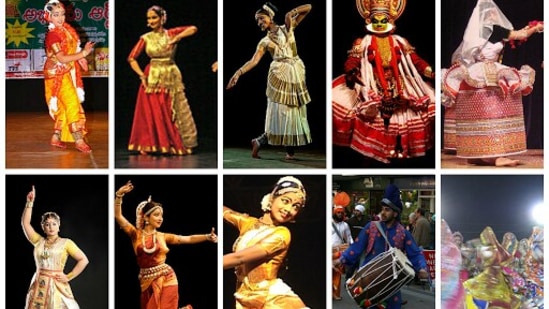
One of the most popular Indian classical dance styles is kathak. It is said to have come from the wandering storytellers known as Kathakars in North India. It is Uttar Pradesh's traditional dancing style. The three main styles of Kathak, or "gharanas," are named after the places where the Kathak dance tradition originated: Jaipur, Banaras, and Lucknow. The early Kathak attire consisted of a ghaghra (long skirt), a choli (blouse), and a veil. It eventually made way for churidhar, pyjamas, angrakha, and a sari for ladies. Famous kathak performers include Birju Maharaj, Lachhu Maharaj, Gopi Krishna, Sitara Devi, and Damyanti Joshi.
2. Bharatnatyam
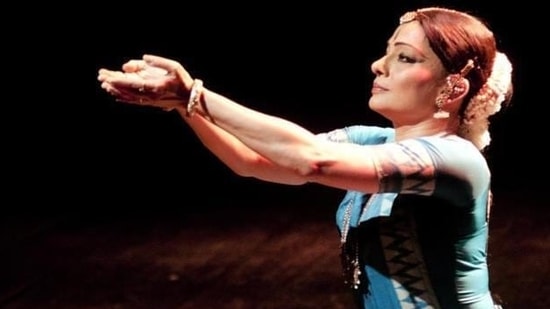
The oldest form of traditional Indian dance is called Bharatanatyam. Tamil Nadu is thought to be where it first appeared. A well-rehearsed and carefully choreographed blend of facial expressions, hand gestures, dance steps, and eye movements is used in a Bharatanatyam performance. Carnatic music is mainly used for performance. Bharatanatyam costumes often come in two varieties. They are pyjama-style and have a different skirt design. These two outfit designs are artistic and provide the dancer with comfort so they can do the actions that correspond to the "Tala sounds." Heavy jewellery and makeup are ordinary for Bharatnatyam dancers. Some of the famous name in the dance field include Rukmini Devi, Padma Subrahmanyam, Alarmel Valli, Yamini Krishnamurthy and Mallika Sarabhai.
3. Kathakali
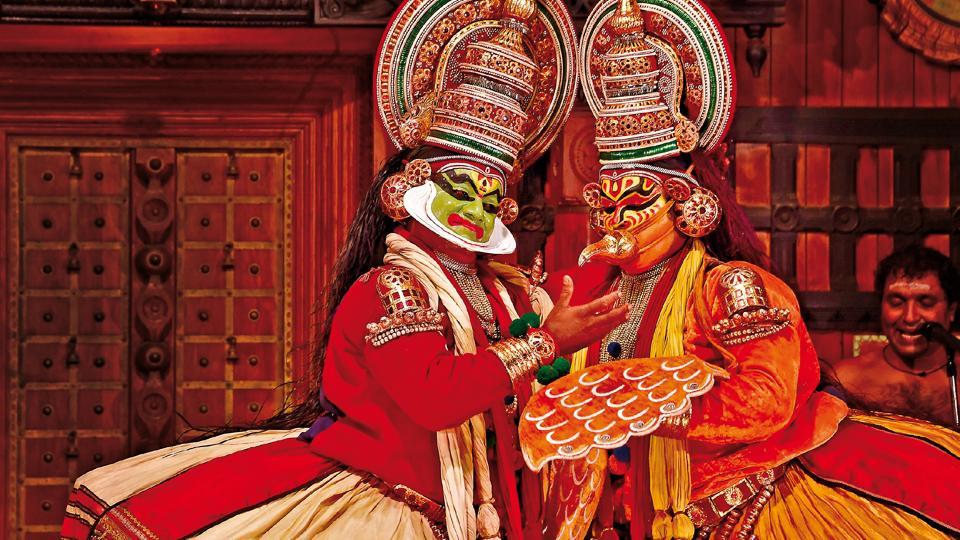
One of the main classical Indian dance genres is Kathakali. It has international renown. It's known to have its roots in Kerala. The male actor-dancers wear lavishly colourful make-up, costumes, and face masks, which set this kind of art apart from other "story plays." Orchestra makes up the majority of the music. Kathakali performers typically dress in white and red tones, using bulky headgear and wearing dramatic makeup. Famous Kathakali performers include K.P. Namboothiri, Kalamandalam M. Gopalakrishnan, and K.S. Rajeevan.
4. Kuchipudi
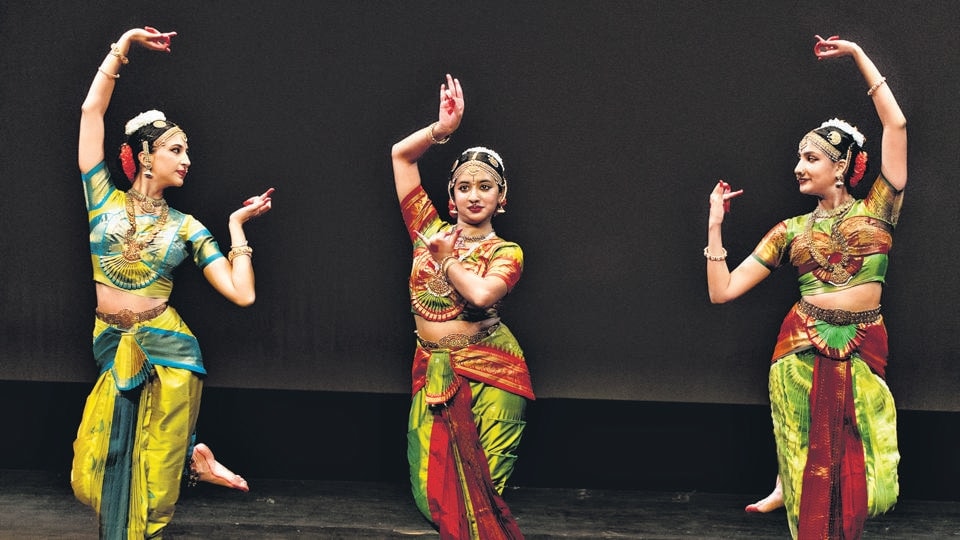
Kuchipudi is a drama-based dance performance. Its roots are in the ancient Hindu sanskrit text of Natya Shastra. It is originated from the state of Andhra Pradesh. All roles in the dance drama are played by men. Usually it depicts the tale of Lord Krishna and tradition of Vaishnavism. In Kuchipudi, a male character wears dhoti while a female character wears a colourful sari that is stitched with a pleated cloth which opens like fan while displaying beautiful footwork. Make-up is generally light complemented with traditional jewellery of the region which adorns the hair, nose, ear, arms and neck of the artist. Famous Kuchipudi artist incule Ragini Devi, Yamini Krishnamurti and Raja and Radha Reddy.
5. Manipuri
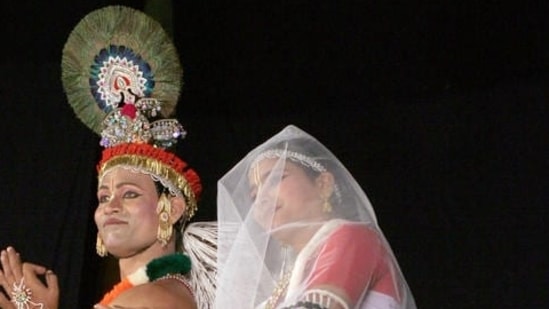
As suggested by the name, Manipuri dance originated in Manipur. It is typically done using themes from Ras Lila and Vaishnavism. Its origins can be found in "Natya Shastra," just as other classical dance styles. The flute and drum are the main musical instruments used in the dance style. When compared to other Indian dances, it is more quiet. In sharp contrast to the other Indian traditional dances, the performer does not wear ghunghru. Male dancers typically wear a dhoti, a kurta, and a white turban, while female dancers typically don a long, stiff skirt with ornate embellishments in the shape of a barrel. Some of the well-known Manipuri dancers include Nirmala Mehta, Guru Bipin Sinha, and Yumlembam Gambhini Devi.
Follow more stories on Facebook and Twitter
- Culture Of India
Join Hindustan Times
Create free account and unlock exciting features like.

- Terms of use
- Privacy policy
- Weather Today
- HT Newsletters
- Subscription
- Print Ad Rates
- Code of Ethics
- Live Cricket Score
- India Squad
- T20 World Cup Schedule
- Cricket Teams
- Cricket Players
- ICC Rankings
- Cricket Schedule
- T20 World Cup Points Table
- T20 World Cup Stats
- T20 World Cup Australia Squad
- T20 World Cup Pakistan Squad
- T20 World Cup England Squad
- India T20 World Cup Squad Live
- T20 World Cup Most Wickets
- T20 World Cup New Zealand Squad
- Other Cities
- Income Tax Calculator
- Budget 2024
- Petrol Prices
- Diesel Prices
- Silver Rate
- Relationships
- Art and Culture
- Taylor Swift: A Primer
- Telugu Cinema
- Tamil Cinema
- Board Exams
- Exam Results
- Competitive Exams
- BBA Colleges
- Engineering Colleges
- Medical Colleges
- BCA Colleges
- Medical Exams
- Engineering Exams
- Horoscope 2024
- Festive Calendar 2024
- Compatibility Calculator
- The Economist Articles
- Lok Sabha States
- Lok Sabha Parties
- Lok Sabha Candidates
- Explainer Video
- On The Record
- Vikram Chandra Daily Wrap
- EPL 2023-24
- ISL 2023-24
- Asian Games 2023
- Public Health
- Economic Policy
- International Affairs
- Climate Change
- Gender Equality
- future tech
- Daily Sudoku
- Daily Crossword
- Daily Word Jumble
- HT Friday Finance
- Explore Hindustan Times
- Privacy Policy
- Terms of Use
- Subscription - Terms of Use
Home — Essay Samples — Life — Dance — The Revival of Classical Indian Dance Forms in the 1900s
The Revival of Classical Indian Dance Forms in The 1900s
- Categories: Dance Indian Culture
About this sample

Words: 433 |
Published: Mar 1, 2019
Words: 433 | Page: 1 | 3 min read

Cite this Essay
Let us write you an essay from scratch
- 450+ experts on 30 subjects ready to help
- Custom essay delivered in as few as 3 hours
Get high-quality help

Dr. Heisenberg
Verified writer
- Expert in: Life Arts & Culture

+ 120 experts online
By clicking “Check Writers’ Offers”, you agree to our terms of service and privacy policy . We’ll occasionally send you promo and account related email
No need to pay just yet!
Related Essays
4 pages / 1810 words
2 pages / 694 words
3 pages / 1223 words
1 pages / 2726 words
Remember! This is just a sample.
You can get your custom paper by one of our expert writers.
121 writers online
Still can’t find what you need?
Browse our vast selection of original essay samples, each expertly formatted and styled

Related Essays on Dance
Have you ever been captivated by the beauty and grace of a dance performance? The artistry and skill displayed on stage can transport audiences to another world, evoking a range of emotions and leaving a lasting impression. In [...]
In this essay about dance passion, I will discuss the role of dancing in my life. Dancing has been a special part of my life since I was a little girl. I always loved dancing because it cheerfully fills my heart. Dance is a [...]
The 1920s was a decade of unprecedented change and innovation in American society, a period often referred to as the "Roaring Twenties." This era was marked by a booming economy, rapid technological advancements, and shifting [...]
The history of theatrical dance is rich and diverse, spanning cultures and centuries. From ancient religious rituals to modern-day performances, dance has been an integral part of human expression and artistic creativity. This [...]
Ballet and traditional Zulu Indlamu dance come from vastly different origins but both are traced back to the 17th century and started from royalty. When colonisation occurred in South Africa, ballet was brought. Even though [...]
Dancing in Colombia is a vibrant and integral part of the country's culture, with roots that stretch back to ancient indigenous traditions and have been influenced by African, European, and Caribbean influences over the [...]
Related Topics
By clicking “Send”, you agree to our Terms of service and Privacy statement . We will occasionally send you account related emails.
Where do you want us to send this sample?
By clicking “Continue”, you agree to our terms of service and privacy policy.
Be careful. This essay is not unique
This essay was donated by a student and is likely to have been used and submitted before
Download this Sample
Free samples may contain mistakes and not unique parts
Sorry, we could not paraphrase this essay. Our professional writers can rewrite it and get you a unique paper.
Please check your inbox.
We can write you a custom essay that will follow your exact instructions and meet the deadlines. Let's fix your grades together!
Get Your Personalized Essay in 3 Hours or Less!
We use cookies to personalyze your web-site experience. By continuing we’ll assume you board with our cookie policy .
- Instructions Followed To The Letter
- Deadlines Met At Every Stage
- Unique And Plagiarism Free

- Govt. Jobs Notifications
- Test Series
- IBPS Clerk Mains General/ Financial Awareness Test Series
- SBI PO Mains GA/ FA Test Series
- OS 3 Financial Awareness Test Series
- OS 2 Financial Awareness Test Series
- Bank of India PO Application Form
- UPSC EPFO Apply Online
- Bank of Baroda AO
- RBI Grade B
- SSC CGL Exam Pattern [New]
- Application Process
- Application Form
- UPPSC Judicial Services (PCS J)
- UPPCS Mains Test Series
- UPPSC Prelims Test Series
- UPPCS Syllabus
- Study Material for UPPCS
- UPPCS Books
- UPPSC PCS Exam Pattern
- UPPSC Answer Key
- UPPSC Admit Card
- MPPSC Prelims Test Series
- MPPSC Books List
- MPPSC Syllabus
- MPPSC Answer Key
- UP Police Constable Syllabus & Exam Pattern
- UP Police Constable Answer Key
- UPSSSC PET Apply Online
- UPSSSC PET Answer Key
- ">Current Affairs
- Daily Current Affairs
- Monthly Current Affairs
- Hindi Current Affairs
- Banking Awareness
- Question of the Day
- General Awareness
- Quantitative Aptitude
- General Science
- Know Your State
- Political Science
- Word of the Day
- The Hindu Vocab
- Exam Wise Private Session
- Subject Wise Private Session
- All Quizzes
- Current Affairs Quiz
- Banking Awareness Quiz
- RRC Group D
- SBI PO Mains - GA/ BA
- IBPS Clerk Mains Financial and General Awareness
- IBPS RRB Officer Scale 2 Financial Awareness
- IBPS RRB Officer Scale 3 Financial Awareness
- IBPS SO PRELIMS IT HR AFO MO
- IBPS SO PRELIMS LO RA
- IBPS CLERK PRELIMS
- IBPS RRB Officer Scale 2 3
- IBPS RRB Office Assistant Prelims
- IBPS RRB Officer Scale I Prelims
- IBPS PO PRELIMS
- SSC CPO Paper 1
- SSC CGL Tier 2
- MPPSC Prelims 2023
- BPSC Prelims
- UPPCS Prelims 2024
- UPPCS Mains 2022
- Civil Services Prelims
- --> Sign Up
Indian Classical Dance Forms | Facts, Famous Dancers, Origins of Classical Dances of India
Out of many dance forms in India practiced across different regions, eight types of dance forms have been recognized as classical dance forms of India by Sangeet Natak Akademi. Below you will get to know about each Classical dance form in India. Their details are as follows-
List of Classical Dance and State
1. Bharatanatyam
- Bharatanatyam is the oldest dance form of India. It is called the mother of all other styles of classical dance in India.
- Rukmani Devi Arundale and Padma Subrahmanyam are famous Bharatanatyam dancers.
- Its origin is believed to be from Tamil Nadu, and it was earlier also known as Sadir Attam .
- This dance was nurtured by temples and kingdoms of South India since ancient times.
- It expresses South Indian religious themes and spiritual views, particularly Shaivism, Vaishnavism and Shaktism.
- It was banned by the colonial British government in 1910.
- The dress of a Bharatanatyam dancer is similar to the dress of a Tamil Hindu bride.
- Jathiswaram
- Shlokam or Mangalam
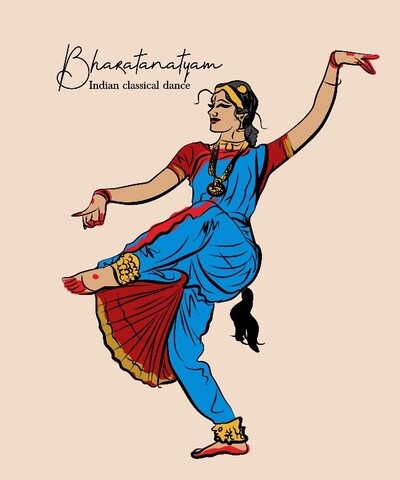
Bharatanatyam Dance form
- It is one of the eight forms of ancient classical dances of India. It originated from Uttar Pradesh.
- The origin of Kathak is traditionally believed by Kathakars or storytellers in ancient north India.
- Kathak dancers narrate the narrative through hand gestures, extensive footwork and most importantly, facial expressions.
- Kathak performances include Urdu ghazals and commonly use instruments brought during Muslim rule.
- Kathak dance form emphasizes the movement of rhythmic legs and Kathak artists wear ghungroos on the feet.
- The most common musical instrument in Kathak is the tabla. Other instruments like Sarangi, Harmonium and Manjira are also used.
- Jaipur Gharana, Banaras Gharana and Lucknow Gharana are famous schools of Kathak.
- Shambhu Maharaj, Lachhu Maharaj and Sundar Prasad were famous Kathak artists.
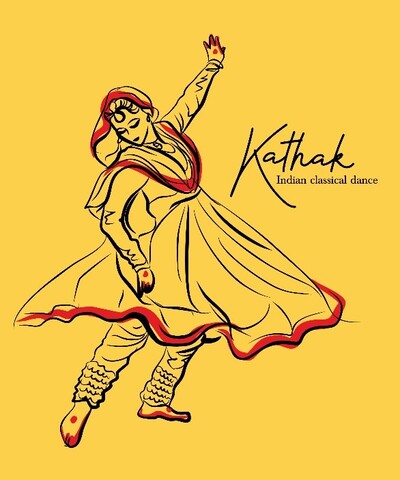
Kathak Dance form
3. Kuchipudi
- Kuchipudi is the most popular traditional dance form in South India and its origin is believed to be from Andhra Pradesh.
- Kuchipudi evolved as a Vaishnavism tradition and is most closely related to the Bhagavata Mela.
- Traditional Kuchipudi was performed by a male troupe.
- Typical musical instruments in Kuchipudi are Mridangam, Jhanj, Veena, Bansuri and Tambura .
- Mallika Sarabhai, V. Satyanarayana Sarma, Deepa Shashindran, Usha Srinivasan and Swapna Sundari are the masters of this dance.
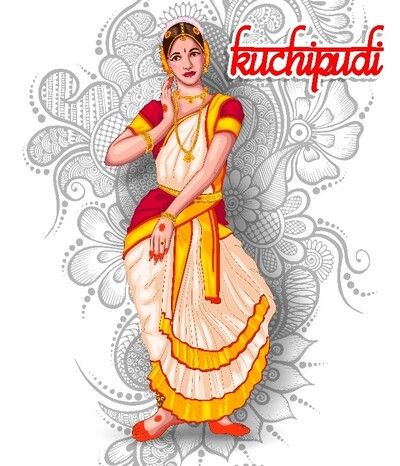
Kuchipudi Dance Form
- This classical dance originated in Orissa and is traditionally performed in temples.
- Odissi dance expresses Vaishnava themes and other traditions related to the Hindu gods Shiva and Surya.
- Odissi dance is known for its style, independent postures of head, chest and hands, called bhanga. Odissi Tribhanga Asana is particularly famous.
- Odissi dance tradition declined during the Islamic rule and was suppressed under British rule.
- Modern Odyssey is performed by children and adults, singly or as a group.
- Sujatha Mohapatra and Madhavi Mudgal are the masters of this dance.
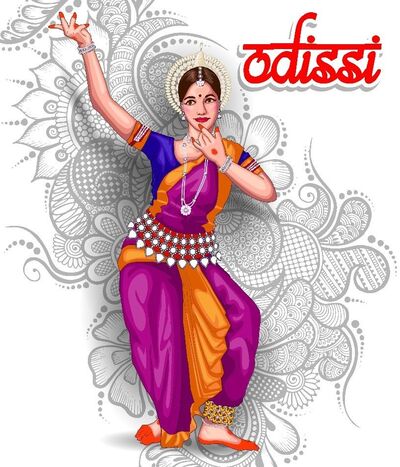
Odissi Dance Form
5. Kathakali
- Kathakali belongs to Kerala.
- In its fully developed form, Kathakali started around the 17 th century.
- It is a mixture of dance, music and acting.
- In Kathakali, male actors traditionally wear clothes of female dancers, use elaborately colored make-up, costumes and face masks.
- In Kathakali, stories of the Indian epics are depicted through drama.
- Kalamandalam, Krishnan Nair and Ramanakutty Nair were the masters of this dance.
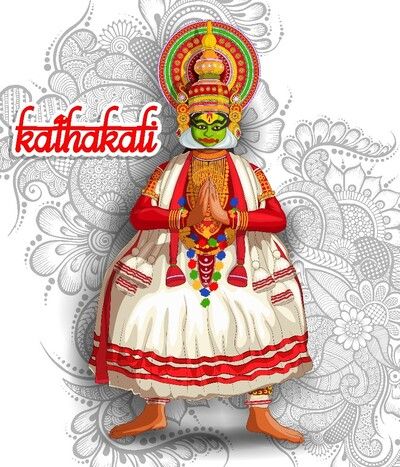
Kathakali Dance Form
6. Sattriya
- Sattriya dance, one of the eight major classical Indian dance traditions, has its origins in Assam.
- It is a dance-drama performance art presented in the Krishna-centric Vaishnavism monasteries of Assam.
- Its origins are believed to be by Srimanta Sankardev. He was a scholar and saint of Bhakti movement of 15 th century.
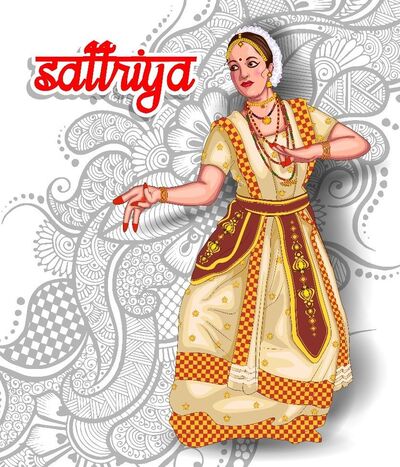
Sattriya Dance Form
7. Manipuri
- Manipuri dance form is one of the major classical dance forms of India; its origins are believed to be from Manipur.
- The theme of Manipuri dance is based on Radha and Krishna's Rasleela.
- Manipuri dance is also known as Jagi.
- This dance is performed during Lai Haroba in Manipur during the worship of regional deities such as Umang Lai.
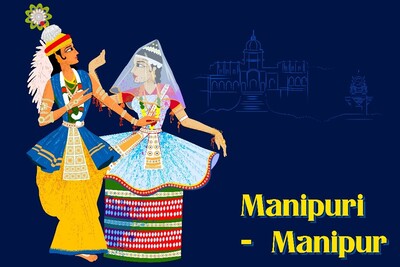
Manipuri Dance Form
8. Mohiniattam or Mohiniyattam
- Mohiniattam is another classical dance form of Kerala and is one of the eight Indian classical dances.
- The word Mohini of Mohiniyattam dance is derived from Mohini, a mythical incarnation of the Hindu god Vishnu, who helps the victory of good over evil by its feminine powers.
- Its dance song is in Manipravalam, a Malayalam-Sanskrit hybrid.
- Bharti Shivaji, Sunanda Nayyar and Mithil Devika are famous Mohiniattam dancers.
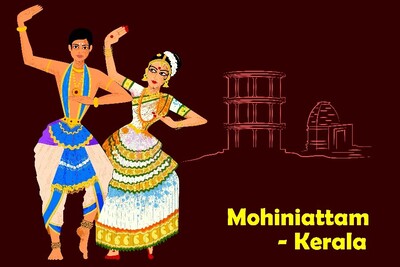
Mohiniattam Dance Form
Cool Offer in HOT Summer get 35% Off Use Coupon code MAY24

Latest Current Affairs
Daily Current Affairs and GK | 30 May 2024
Daily Current Affairs and GK | 29 May 2024
Daily Current Affairs and GK | 28 May 2024
Daily Current Affairs and GK | 26 and 27 May 2024
Daily Current Affairs and GK | 25 May 2024
Question Of The Day
The festival of Sekrenyi is celebrated in the month of February by the Angami tribe of: / सेक्रेनी का त्यौहार फरवरी के महीने में अंगामी जनजाति द्वारा मनाया जाता है:
Attempt Daily Current Affairs Quiz

Subscription Gets You
- In the Annual Current Affairs plan, you will get 24 Monthly Current Affairs Books including Hindi and English versions, 2 Half Yearly Current Affairs Book and Daily Current Affairs PDFs.
- The plus point is that you can select your own date of content to unlock, i.e., you can select the duration of which you want the content.

Learn Dance from top experienced teachers
7 indian traditional dance forms with states.
23 May 2023
Can you express your feelings or tell a story without uttering a word? Well, yes! You can! If you can learn to speak with your feet or recite poetry in motion. If you learn to speak, sing, and convey the exuberance of your heart to the beholders through your body. You can do all of these and more - if you can dance!
One of the best manifestations of our country’s rich cultural heritage is found in the Indian traditional dance forms. 7 Indian traditional dance forms emerged from different regions of the country. Each of these dance forms has distinct characteristics that set them apart from each other. Yet, one thing that runs like a common thread is that they are deeply rooted in spirituality and devotion.
Dance finds its roots in the religious traditions in India. Devotion is the purest emotion that one can experience. When the heart is in an ecstatic state - it finds its expression in music. And when the joy brims over from the heart, it finds a way to express itself through dance - that involves every part of the body. Hence, devotional music and dance have always been an integral part of religious rituals and ceremonies in India.
The different Indian traditional dances originated from different regions of the country. Here, we will see how the individual regions contributed to the evolution of these dance forms individually.
7 Indian Traditional Dance Forms with States:
1. Classical Dance of Tamil Nadu - Bharatanatyam
2. Classical Dance of Andhra Pradesh - Kuchipudi
3. Classical Dance of Odisha - Odissi
4. Classical Dance of Uttar Pradesh - Kathak
5. Classical Dances of Kerela - Kathakali and Mohiniyattam
6. Classical Dance of Manipur - Manipuri
7. Classical Dance of Assam - Sattriya
Let's read about them in detail.
1. Dance of Tamil Nadu - Bharatanatyam
A small district in Tamil Nadu - Thanjavur or Tanjore is said to be the birthplace of Bharatanatyam. Earlier it was called Sadira Attam or Dasi Attam.
This classical dance of Tamil Nadu form is said to have flourished during the rule of the Maratha kings of the Bhonsle Dynasty between the 17th to 19th centuries. King Sherfoji II, is a name that deserves to be mentioned here. He was a great patron of art, music, and dance. He encouraged this dance form to grow during his regime.
Tanjore quartets - Ponnaya, Chinnaya, Shivanandam, and Vadivelu were four brothers who learned this art form from their grandfather - Gangaimudu, and father - Subbarayan. They trained in the primeval Bharatanatyam and then modified it by codifying the postures, footwork, and hand gestures in a rhythmic pattern.
Later, dedicated practitioner and torchbearer of this legacy - Rukmini Debi Arundale brought this dance form out from the custody of the Devdasis. She gave it a respectable place as a mainstream performing art.
2. Dance of Andhra Pradesh - Kuchipudi
Like any other classical dance form in India, Kuchipudi also draws its fundamental techniques and principles from Bharat Muni’s Natyashastra. Further, the Bhakti movement has had a major influence in originating and shaping the classical dance of Andhra Pradesh.
Siddhendra Yogi, a Vaishnava saint who lived in the 17th century, is credited with the codification and popularization of Kuchipudi as a distinct dance form. He introduced several innovations, blending elements of dance, music, and drama. Siddhendra Yogi is known for creating dance dramas called "Bhagavatam," which combine dialogues, songs, and dance sequences. His contributions, including the introduction of solo performances, enhanced the style of Kuchipudi.
Before Kuchipudi, the traditional dance of this region was Andhra Natyam or Lasya Natyam. It was characterized by solo performances by female dancers who were called Kalavantulu. Besides this, there we the folk dances of Andhra Pradesh such as Vilasini Natyam and Hari Katha, the melodies and rhythmic patterns of Carnatic music. Together they had a collective influence on how the body movements, hand gestures (mudras), facial expressions (abhinaya), and stagecraft of Kuchipudi as we see it today.
3. Dance of Odisha - Odissi
Two things that put Orissa on the world map are - the grandiosity of its temples and the Odissi dance. The dance postures are found to be carved out on the walls of the temples. It is indicative of the fact that the foundation of this dance form is steeped in devotion or Bhakti Bhav.
The origin of this dance form can be traced back to the ancient temples of Odisha, where it was practiced as a form of religious expression and performed as a part of temple rituals. Odissi has deep historical roots, with evidence of its existence dating back to the 2nd century BCE. The ancient temples of Odisha, particularly the Sun Temple at Konark, served as important centers for the development and patronage of the dance form. Sculptures and reliefs found in these temples depict dancers in various poses and movements that are characteristic of Odissi.
Earlier, a group of women called Mahari used to perform the Odissi dance in the temples. The word Mahari refers to Mahan Nari - one who is devoted to God. Their dance was a significant part of the daily rituals in front of the deity of Orissa - Jagannath Deva.
Another dance style - Gotipua - often referred to as the precursor of Odissi was practiced in the courts and on the streets of Orissa. Gotipua was performed by boys who dressed as girls. Odissi has evolved from Gotipua and Mahari.
A notable milestone in the development of Odissi was the composition of the Gita Govinda by the 12th-century poet Jayadeva. The Gita Govinda is a lyrical poem that narrates the divine love of Radha and Krishna. It provided a rich source of inspiration for Odissi, with its emotional themes, poetic verses, and musicality. The dance form incorporated episodes from the Gita Govinda into its repertoire, solidifying its connection to Odisha's cultural and literary heritage.
Odissi is characterized by its graceful movements, intricate postures, fluid footwork, and expressive gestures. The repertoire of Odissi includes traditional items like Mangalacharana (invocation), Pallavi (abstract dance), Abhinaya (expressive pieces), and various dance dramas based on mythological and literary themes.
4. Dance of Uttar Pradesh - Kathak
One of the eight classical dance forms in India, Kathak also finds its roots in Natya Shastra. As the name suggests, Kathak comes from the word Katha - meaning stories. Kathak or Kathakar is a term used for storytellers.
During the Mughal era, especially in the 16th and 17th centuries, Kathak received significant patronage in the royal courts of Uttar Pradesh, particularly in cities like Lucknow and Faizabad. The Mughal rulers, including Emperor Akbar and his successors, admired and supported the art form, incorporating it into their cultural activities. Kathak dancers were employed in the royal courts and performed for the pleasure of the emperors and their nobility.
The interaction between the temple traditions and the influences of Persian and Islamic cultures led to the fusion of styles that shaped Kathak. The Persian influence introduced elements like storytelling, poetry, and expressions of courtly love into the dance form. Kathak absorbed these influences while retaining its core techniques and rhythmic patterns.
Kathak was primarily used to narrate Krishna Leela. The bol or syllables, taal, and lay are the most significant parts of this dance form. This is a dance form that teaches you the art of speaking with feet.
It is beautifully explained by Birju Maharaj. The training starts with a basic footwork practice named tatkaar. The students keep their hands folded, palms placed one on top of the other, starting with the right feet and then, alternating the feet with the basic bol of - Ta Thei Thei Tat | Aa Thei Thei Tat. Birju Maharaj calls it is ‘maha mantra’ of Kathak that a student has to chant with his/ her feet. He also says that the mode of speech in Kathak is through the Ghungroo and hand movements are used to render shape and form to the repertoire.
Kathak has been practiced mostly in North Indian cities like Varanasi, Lucknow, Allahabad, and Jaipur. It flourished during the Mughal era as it became the most sophisticated and graceful presentation made by the courtesans in that era. During the Bhakti movement, Kathak became a medium to establish love as the core of devotion. Tales of Krishna with Radha and other Gopinis were narrated through Kathak dance. In this period, Kathak evolved as a mode of worshiping God through dance.
5. Dances of Kerela - Kathakali and Mohiniyattam
It is hard to ignore the bright costume and the makeup of a Kathakali dancer. The energy level, poise, and grace of the dancers are unmatched.
Just like the name suggests - Kathakali refers to the narration of a story. This dance form was incepted in Kerela under the aegis of the prince of Karnataka. Two traditions of ancient India - Krishnattam or stories of Lord Krishna and Kutiyattam, meaning classical dance drama - are the precursors of Kathakali.
The themes of Kathakali are mainly taken from mythological stories of Ramayan and Mahabharat. In recent times, Kathakali dance presentations have also seen recreating Shakespearean plays.
The famous exponents in this dance form include - Kalamandalam Krishna Prasad, Kalamandalam Keshava Namboodiri, and Kalamandanlam Gopi - to name a few.
Mohiniyattam
Mohiniyattam, anchored by elements of Lassya, is one of the most graceful and spellbinding of all dance forms in India. It is explained through the mythological episode when Lord Krishna donned the garb of a female named Mohini.
This dance form is performed solely by female dancers. The white or off-white consume and the one-sided bun as the hair-do are the identifiable characteristics of the Mohiniyattam.
Just like other temple dances, Mohiniyattam was also banned during British rule. However, in the 1930s some of the Vallathol Narayan Menon, a Nationalist poet, revived this dance form. He established the Kerela Kalamandala dance school.
Later, exponents like - Thankomuni, Mukundraj, Krishna Paniker, and many others took up the baton to take this traditional art form ahead.
6. Dance of Manipur - Manipuri
From the far east of India comes a dance form that commemorates love. Manipuri dance, also known as Manipuri Raas Leela originated as a devotional temple dance that was performed in front of Lord Krishna. Eventually, it evolved as a medium of storytelling to narrate the divine love between Radha and Krishna.
Manipuri dance has a distinctive style that sets it apart from the rest of the classical dance forms in India. The first thing that catches the eye of this dance form is that its movements are very much measured. The hands never go above eye level, the elbows are also kept at a fixed distance from the torso.
The basic footwork is termed ‘chali’. ‘Lasya’ is a feminine step that involves gently lifting the body upon the toe and bringing it down in a soft and flowy manner. When the same step is performed with a small jump it is termed as ‘Tandav’ - which is a masculine expression.
The attire for Manipuri dance is also very unique, particularly that of the female dancer. And certainly, it deserves a special mention. The female costume is called ‘patoli’. The skirt, known as ‘Kumin’ is crafted into a stiff cylindrical form with a mix of fabric and a mesh of wire. It is embellished and covered with a layer of silk fabric.
The headgear includes a chura - a conical structure attached to a veil made of a net that covers the face of the female performer. The facial expression can be seen through the net.
The beauty and grace of Manipuri dance are ethereal, to say the least. It has made it to transcend the boundaries of a small state nestled amid the lofty Himalayan ranges at its eastern edge to be recognized as one of the major classical dance forms in India.
7. Dance of Assam - Sattriya
Assam is marked on the global map because of its folk dance - Bihu. However, the state also has in its treasures a unique gem like Sattriya - one of the major classical dance styles.
Sattriya dates back over 500 years. It originated in the Vaishnavite monasteries of Assam. This dance style is used to narrate mythological stories. Like any other classical dance style in India, Sattriya involves a blend of dance and acting.
Till the first half of the 19th century, Sattriya was practiced only by male dancers. Thereafter, it traversed from the sanctum to the metropolitan stage. Over time, Sattriya gathered many accolades from people from India and across the world.
Ending notes
The 7 Indian traditional dance forms have been a medium of storytelling. From singing praises of gods and goddesses to narrating tales of princes and princesses from the mythologies, stories of love, gallantry, and much more.
Today, Traditional dance forms of India are revered all across the world. It gives the cultural identity of the country a distinctive edge. Each of these 8 dance forms has survived the test of time, seen the rise and fall of empires, and has thrived to evolve as the cultural identity of the country. It continues to inspire youngsters. It guides them to manifest their creativity and attain perfection.
If you want to learn any of these dance styles explore these online dance classes .
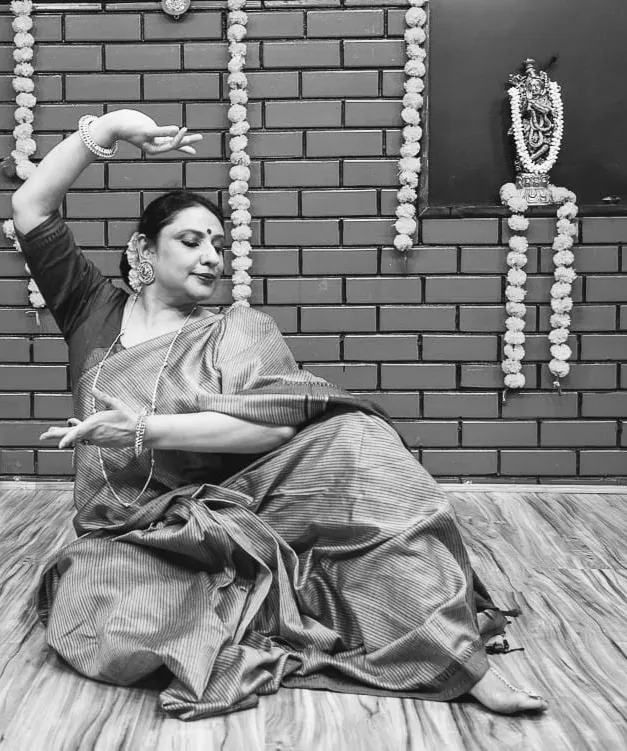
Learn Dance Online

Related Blogs
10 Famous Indian Folk Dances
05 Mar 2024
Different Types of Dances in India
12 Dec 2023
10 Western Dance Styles - Always High on Demand

8 Indian Classical Dance Forms
India is a land which is rich in cultural diversity . Its people live a life filled with dance , music, delicacies and festivities. The country’s diversity is reflected in its varied cuisine, music and most importantly in the beautiful dance forms .
Classical dance forms of India, also known as Shastriya Nritya , come from the words, Shastriya meaning classical and Nritya meaning the act of dancing.
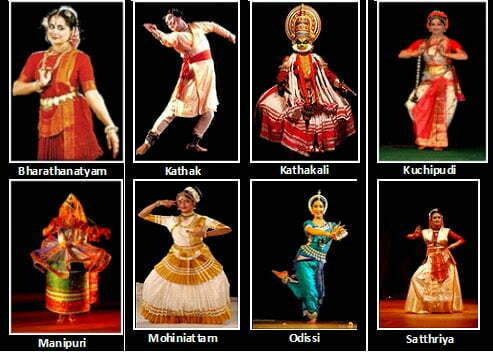
There are 8 classical dance forms in India. Let’s take a detailed look at each of these dance forms. Their names, history and origin are discussed in detail below.
Bharatanatyam
Mohiniyattam , different types of instruments used, state wise classical dance forms names.
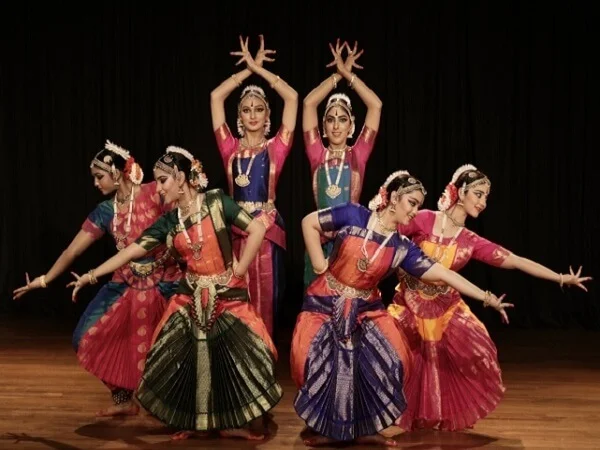
Originating from Tamil Nadu, Bharatanatyam dance style is an ancient and oldest classical dance form in India. Earlier its name was Sadhir Attam. Bharatanatyam is a temple dance and it tells stories from various Hindu scriptures.
The beginning of Bharatanatyam
The foundations of Bharatanatyam are present in Natya Shastra , the ancient Sanskrit Hindu text about performing arts. Archaeologists estimate the first compilation of the text to be between 200 BCE and 200 CE.
Another historical reference of Bharatanatyam style is found in spics like Manimegali as well as Silappatikaram. written in the 6th and 2nd centuries, respectively.
Furthermore, the carvings in Kanchipuram’s Shiva temple, suggest Bharatanatyam dance and style was developed as performance art by the first Millenium.
Modern authors as well as some colonial Indologists believe Bharatanatyam to be a descendant of ancient Devadasi culture, thus, suggesting its origin between 300 BCE and 300 CE. This belief is further strengthened by the depiction of the dance being performed by women in temple quarters in several historical scriptures. Throughout the 19th century, Bharatanatyam remained exclusive to Hindu temples. However, in the 20th century, it began appearing on stage outside temples.
Bharatanatyam during the colonial era
With the arrival of British rule in the 19th century, many Indian dance forms , including Bharatanatyam were mocked and discouraged. Thus, these art forms declined. Furthermore, Christian missionaries presented the devadasis of south India as evidence of harlots and an erotic culture that must be stopped. In 1910, the Madras Presidency outlawed temple dancing, and with it, Bharatanatyam.
Bharatanatyam in the modern world
After India gained independence, Bharatanatyam rapidly expanded throughout all communities. Many people then began practising the dance which led to a number of schools offering lessons in Bharatanatyam. Now, there are four styles of Bharatnatyam , namely, Melathoor, Pandanalloor, Vazhavoor, as well as Kalashetra.
Other Bharatanatyam lessons at learning Bharatanatyam online
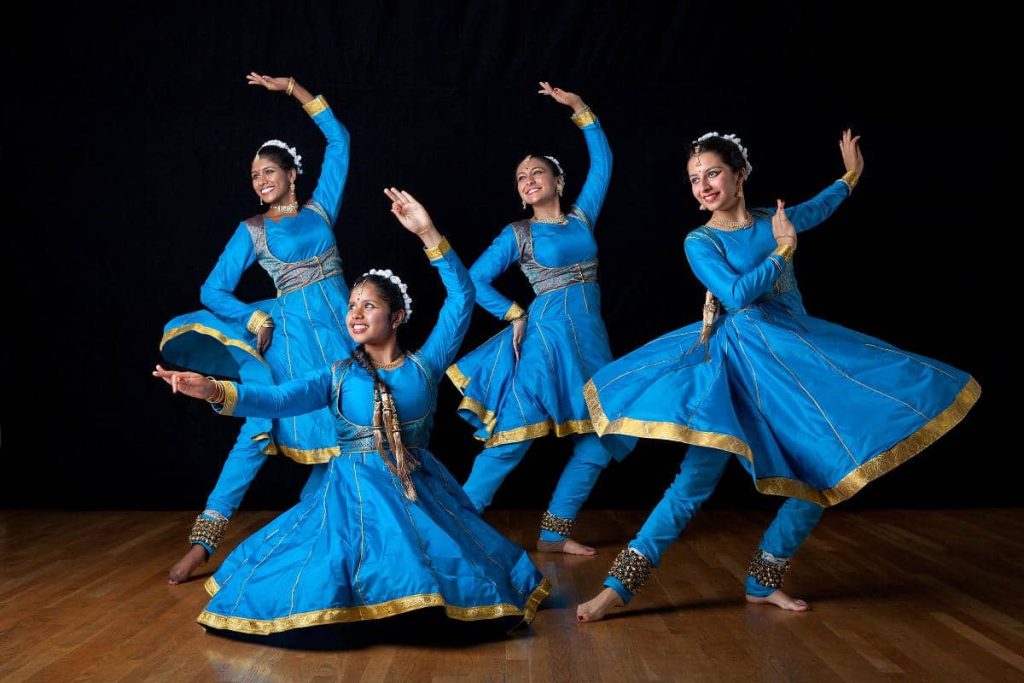
The dance form Kathak originated from the state of Uttar Pradesh. It is a mix of worshipping deities and story narration. Grace, hand gestures and body pose as well as eye movements combine to make Kathak a graceful sight.
A Kathak performance starts with a dancer offering respect to the guru and prayer to receive god’s blessing. Then the dancer moves on to the dance. The music that accompanies a Kathak performance uses different classical instruments like Sarangi Seeta, Manjira, Tabla , Harmonium , etc.
Kathak in ancient India
The roots of this dance form trace back to Natya Shastra, an ancient Hindu text written by musicologist Bharata Muni. The word Kathak comes from the Vedic Sanskrit word ‘Katha’ meaning ‘story’. Thus, Kathak refers to a person who tells stories through dance.
With the arrival of Mughals in India, dancers began performing the ancient classical dance in Mughal courts. Although improvisations were made to amuse the Muslim audience, the performances still contained a subtle message like the love of Radha-Krishna. Soon, Central Asian, as well as Persian themes, became a part of the performances. Some of the changes include replacing a sari with a costume that bared midriff and the addition of a transparent veil. By the time the British arrived in India, Kathak had already gained popularity as court entertainment.
The decline of Kathak during British rule
The colonial rule saw the decline of various dance forms. Kathak was one of them. Additionally, the social stigma associated with Kathak and court entertainment, led to the launch of the anti-dance movement in 1982, thus, banning Kathak.
Revival of Kathak
In the upheaval during the 19th century, many families made effort to keep this ancient dance from dying out. In the 20th century, Hindu and Muslim gharanas simultaneously participated in the revival of this dance form. Kalkaprasad Maharaj also played a key role in attracting international viewership of Kathak in the early 20th century.
To learn in detail, read the following articles on 3 Kathak Styles as well as the 7 Kathak levels . Other Kathak lessons can be found at ‘ learn Kathak online ‘.
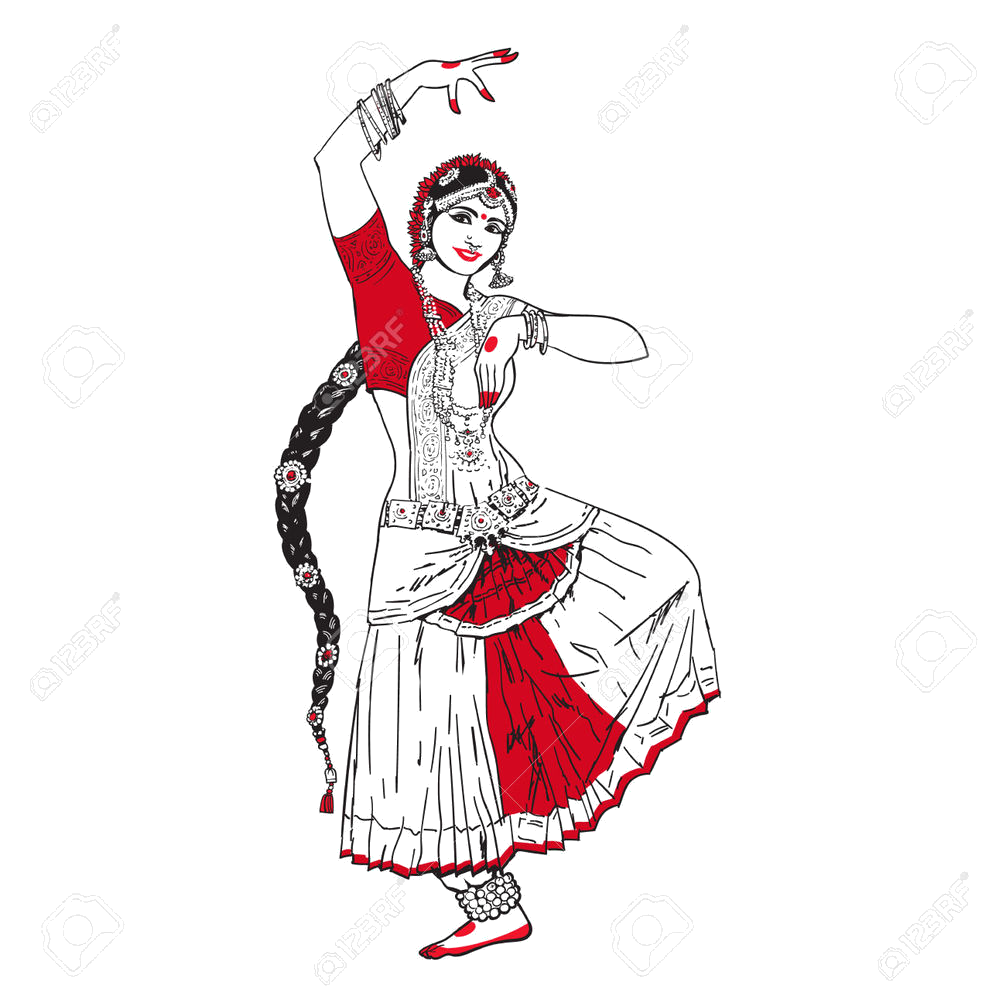
Originating from Odisha, this dance form like Bharatanatyam is also a temple dance form. Odissi is popular worldwide for its lyricism. The ‘bhakti bhava’ aspect, of an Odissi performance, is surreal.
Earlier performed at temples in Odisha, it later took to stage performances. The central theme of the dance form is Lord Jagannath’s worship and the costumes are symbolic of a message of Hindu mythology. The other themes of Odissi are inspired by the sun god, Vaishnavism, Shakti as well as Lord Shiva.
History of Odissi
The origin of Odissi can be traced back to the 2nd century. Carvings of the Rani Gumpa caves in Udaygiri, Odisha beautifully portrays many poses as well as postures of the dance forms.
In ancient temples, dancing girls or Maharis committed their lives to the worship of Lord Jagannath. However, young men, called Gotipuas, dressed in female attire bought the dance form to the public.
During the Mughal rule, temple dancers were also employed to entertain the royal family in the royal courts. They soon became associated with concubinage and were not respected as servants to Lord Jagannath anymore.
A further decline and degradation occurred during the British period, especially when the bill prohibiting temple dancing was passed.
Post-Independence Odissi
With the help of many, including Guru Kelucharan Mohapatra, Odissi was revived as a classical dance form of India in 1955. The Odissi practised today is an attempt of reconstruction from the fragments of the Gotipua , Mahari, Bandhnritya as well as Chhau traditions.
Learn all about Odissi Dance here
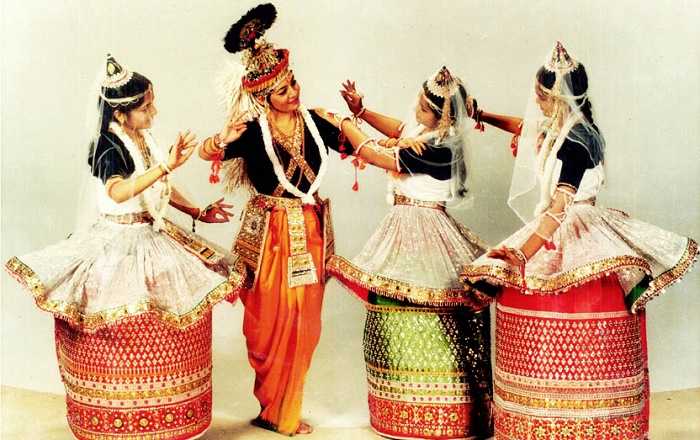
Hailing from the state of Manipur, this dance form is based on the ‘Raasleela’ trope where Radha and Lord Krishna share a dance. As it desires inspiration from Lord Krishna, Manipuri is considered a religious dance form, which combines singing as well as dancing. Manipuri was further expanded by adding the theme of ‘Shaivism’ to it.
Manipuri is generally performed during religious festivals and celebrations like weddings and portrays the spiritual values of Hinduism through dance.
The female dancer dresses as a Manipuri bride while the male dancer wears a dhoti.
History of Manipuri
Manipuri dancers consider themselves to be the ‘Gandharvas’ mentioned in the Vedic texts. These individuals were dancers, singers as well as musicians associated with devas or the deities. Southeast Asian temples of the medieval period contain sculptures of Gandharvas as dancers. Finally, people credit Usha, the goddess mentioned in the Rig Veda, with creating the dance form and tutoring girls in it.
Despite the texts of ancient Manipur slowly vanishing, the oral tradition of Manipuri, dates back to the early 18th century. Furthermore, the Chaitanya style of devotional Vaishnavism, which was adopted by King Gareeb Niwaz in 1717 was imbibed into the dance form. Manipuri advanced its dance tradition by including dance dramas based on Lord Rama in 1734.
Manipuri during the colonial rule
When the British government annexed Manipur in 1891, the Manipuri dance art came under the clasp of colonial rule like other ancient Indian classical dance forms. Following this, in 1920 and 1950, many classical art revolutionists joined hands to revive this ancient dance form.
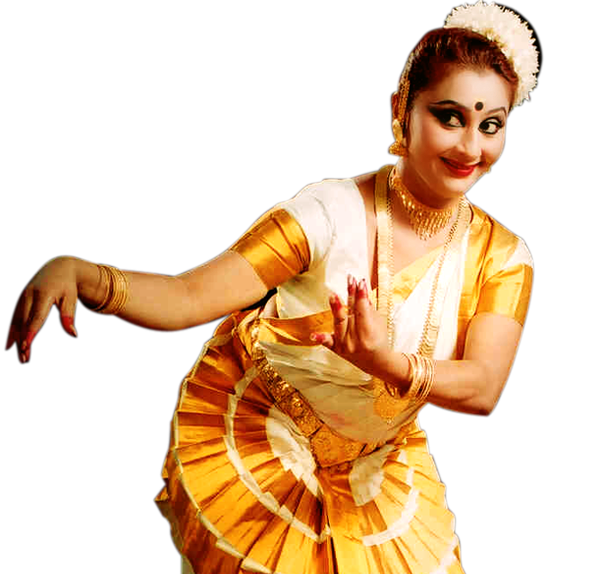
Combining dance, drama as well as rigorous footwork, Mohiniyattam is a classical dance native to Kerala. Its name comes from two words Mohini and aattam meaning the graceful body movements of a woman. Its literal translation means dance of the enchantress. Therefore, people regard Mohiniyattam as a highly graceful dance form performed by women.
The central theme of this dance form is devotion to God. Dancers express this through gentle body formations as well as movements. In addition, Mudras or hand gestures are important in Mohiniyattam. In addition, dancers adorn a white saree with a golden brocade, which is a highlight of the dance form.
History of Mohiniyattam
The history of Mohiniyattam is unclear. Kerala has a lengthy tradition of lasya style dances whose structure and basics may be at the root of Mohiniyattam. The earliest evidence of the dance form is the temples of Kerala. The Kidangur Subramanya temple and the 11th century Vishnu temple at Trikodithanam, are some examples of this. These temples contain several sculptures of dancers in Mohiniyattam poses. Furthermore, textual evidence from the 12th century suggests that Malayalam poets and playwrights included l asya in their themes. Vyavaharamala, the 16th-century text by Nambootiri contains the first known mention of the term Mohiniyattam. Gosha Yatra , another text from the 17th century, also mentions the term. In the 18th and 19th centuries, Mohiniyattam grew as it received the patronage of several princely states.
Mohiniyattam in the colonial era and post colonial era
The seductive gestures and expressions of Mohiniyattam dancers were caricatured in the book The Wrongs of Indian Womanhood , published at the start of the 20th century. Here, people perceived temple dancers as harlots and people began to disgrace age-old Indian culture as well as heritage. Although some women continued to practice Mohiniyattam after this, the dance form had more or less died out.
In the 1930s, Mohiniyattam saw a revival due to the efforts of the nationalist Malayalam poet Vallathol Narayana Menon . He went against the ban on temple dancing as well as established the Kerala Kalamandalam dance school to encourage Mohiniyattam studies.
Other pioneers of Mohiniyattam in the 20th century are Thankamony, Mukundraja, Krishna Panicker as well as Kalamandalam Kalyanikutty Amma .
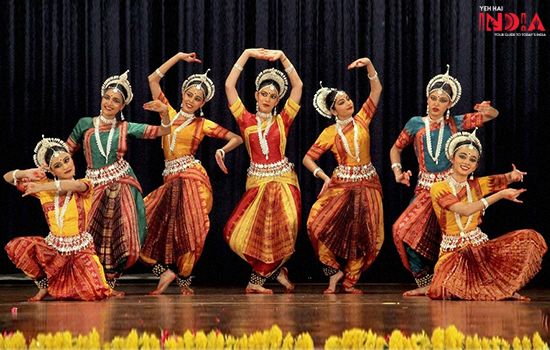
This Indian dance form gets its name from the Kuchipudi village in the state of Andhra Pradesh. Like other classical dance forms on this list, Kuchipudi is also a temple dance.
A Kuchipudi performance begins much like a religious act, with water sprinkling, lighting incense and invoking god’s blessings. In addition to this, it is a magnificent dance form comprising 28 hand mudras or hand gestures.
History of Kuchipudi
Kuchipudi is a evry ancient dance form. In the Sanskrit text Natya Shastra , Bharata Muni describes the graceful Kuchipudi as Kaishiki vritti .
10th-century copper inscriptions depict related to dance performances on Shaivism . Moreover, the dance-drama performance artists of this time were mainly Brahmins.
In the late 13th century, Kuchipudi soared in popularity due to Ganga rulers from Kalinga. Their royal sponsorship enabled many poets as well as dance-drama troupes to practice the art form and they adopted Radha-Krishna themes into classical Kuchipudi. Furthermore, the devotees who practised this were known as Bhagavatulu in Andhra Pradesh.
The modernization of Kuchipudi
In the 17th century, a modern version of Kuchipudi was created. People credit Tirtha Narayanayati as well as his disciple, a Telugu Brahmin called Sidhyendra Yogi for its creation. Narayanayati introduced a series of rhythmic dance syllables at the end of the cantos. His disciple, Sidhyendra Yogi, wrote a play titled Parijatapaharana and hired young Brahmin men to perform in it. Sidhyendra put up the play once a year in the present village of Kuchipudi, thus giving the village its name.
Kuchipudi in the Mughal period
Kuchipudi enjoyed support from various rulers. Copper inscriptions portray royalty viewing dance-drama performances for entertainment. Furthermore, court records of the Vijayanagara Empire indicate that drama-dance troupes performed Kuchipudi at the royal court. However, with the invasion of the Deccan Sultanates in the 16th century, many musicians as well as dance-drama artists migrated south and were welcomed by the Hindu king Achyutappa Nayak. As a result, these people formed settlements that grew to become the modern-day Melattur near Tanjore .
Now, Kuchipudi was divided into two, those who moved near Tanjore and those who were its sole custodians in Andhra Pradesh. In the 16000s the Sultan of Golkonda, Abul Hasan Qutb Shah, granted land to all the Kuchipudi dancers , thus keeping the dance form alive in Andhra Pradesh.
Kuchipudi during colonial rule and its evolution after independence
After the ban on temple dances, Kuchipudi saw a revival during the 1920s due to the efforts of people like Vedantam Lakshminarayana Sastri. She worked closely to reconstruct and revive Kuchipudi performance art. Apart from her, Vempati Venkatanarayana Sastri and Chinta Venkataramayya also played an important part in the revival of the dance form. Additionally, people remember Sastri for teaching Indian women to dance Kuchipudi as solo and team performances. The historic All India Dance Seminar, organized by the national arts organization Sangeet Natak Akademi in 1958, thrust Kuchipudi to the national stage.
The latter half of the twentieth century was dominated by the Kuchipudi school of Vempati Chinna Satyam . His efforts to further modify the dance form earned him multiple awards, including the Padma Bhushan.
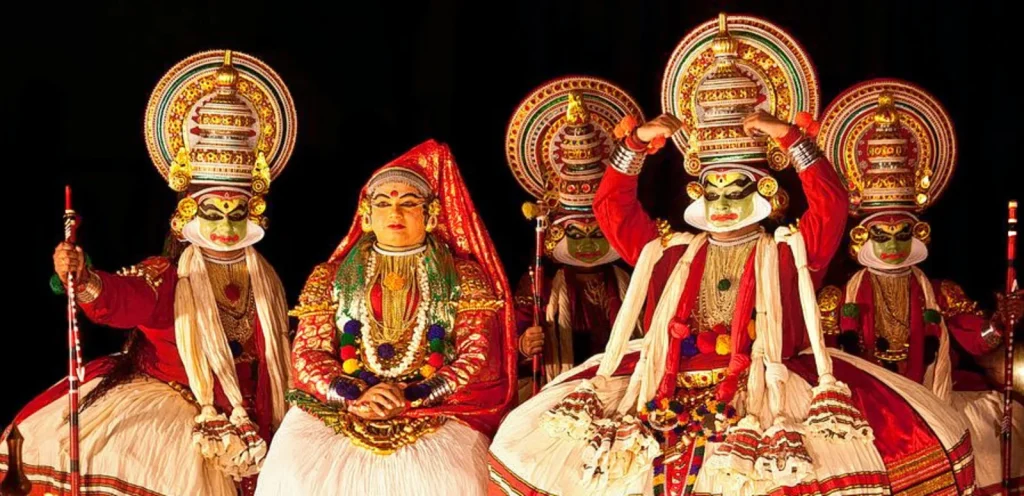
The dance drama, Kathakali originated in the 17th Century, Kerala. It is a blend of devotion, drama, music as well as dance. Most of the themes of Kathakali are inspired by Indian epics.
The makeup in Kathakali is very significant. The ‘ Pacha ’ or green facial makeup represents a noble character. While ‘Kathi’ and ‘Kari’ means a villain as well as a demon respectively. In addition, there are also three types of beards that are a part of Kathakali makeup. Furthermore, the music that accompanies this dance form is a rendition of drums and metal gongs.
History and evolution of Kathakali
The roots of Kathakali are unclear. People believe that the dance form is over 500 years old. Kathakali emerged as a performance art during the 16th and 17th centuries in Kerala, a coastal town in South India, where people spoke Malayalam. However, there is evidence that suggests that the dance form is some 1500 years old.
During colonial rule, like other dance forms, Kathakali had fallen into decline. However, in 1930 the Indian poet as well as public figure Vallathol founded the Kerala Mandalam School and initiated the revival of Kathakali.
Visit this lesson to learn more about the Kathakali Dance form .
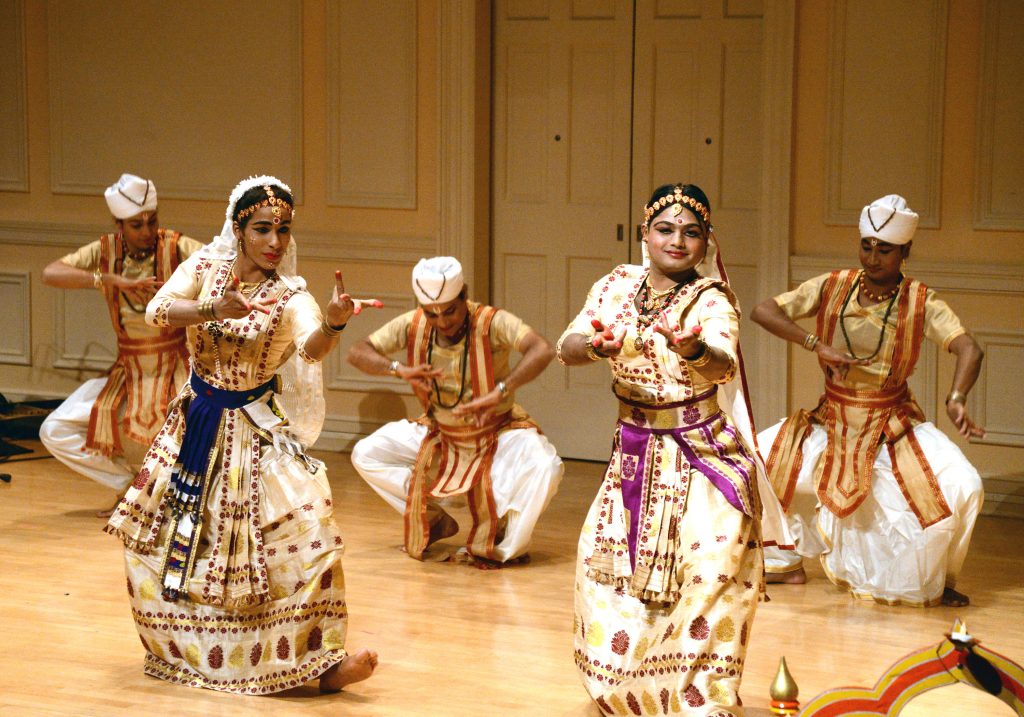
This famous dance form is from Assam . There are several different forms of Sattriya such as Mati Akhara, Jhumura, Krishna Nritya, Nadubhangi, Gopi Prabesh, Gosain Prabesh, Chali, etc.
History of Sattriya
The history of dance in Assam traces back to ancient India, as depicted by copper plate inscriptions as well as sculptures. People credit the modern form of Sattriya to Sankaradeva, who organised the dance using the ancient texts in the 15th century. He bought in both drama, as well as expressive dancing into the traditional dance form as a way of communal devotion to Lord Krishna. In addition, he wrote and directed the dance dramas portraying the dance form along with his principal disciple.
The Sangeet Natak Akademi finally recognized Sattriya Nritya as an official classical dance of India in 2000.
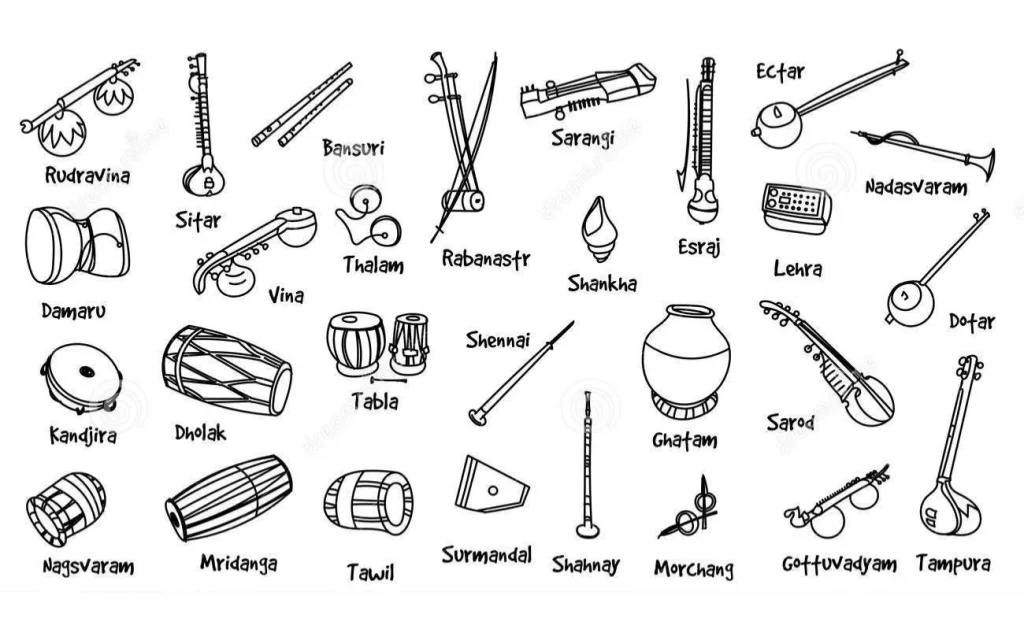
You can go through the following lesson, to learn more about Indian Classical Music Instruments .
For more such interesting articles, keep visiting Podium School Blog !
State, performance type and instruments used in classical dance forms of India
1. Which is the most famous classical dance?
Bharatanatyam is the oldest and the most popular dance form in India. Male as well as female dancers perform this famous dance form all over the world.
2. How many Indian classical dance forms are there?
According to the Sangeet Natak Academy, there are 8 classical dance forms. However, India’s Ministry of Culture recognises 9 dance forms in India , Chhau being the 9th dance form.
3. Which is the principal classical dance form of northern India ?
Kathak is the central dance form of northern India and is widely practised in several states. These include Rajasthan, Delhi, Uttar Pradesh, Madhya Pradesh, as well as parts of eastern and western India.
4. Who is the God of Bharatanatyam?
Lord Shiva is considered the god of Bharatanatyam.
5. Who are famous Dancers of Indian dance forms?
There have been several famous dancers practising each Indian classical Dance form. Some of them include; 1. Bharatanatyam – Hema Malini , Rukmini Devi, Sheema Kermani, Vyjayanthimala, etc. 2. Kathak – Birju Maharaj, Saswati Sen, Lacchu Maharaj, Sambhu Maharaj, Gopi Krishna, etc. 3. Kathakali – Ramanakutty Nair, Kalamandalam Krishnan Nair etc. 4. Kuchipudi – V. Satyanarayana Sarma, Deepa Shashindran , Mallika Sarabhai, etc. 5. Odissi – Shobana Sahajananan, Sujata Mohapatra, Madhavi Mudgal, Surendra Nath Jena etc. 6. Mohiniyattam – Shobhana, Kalamandalam Kalyanikutty Amma, Thankamani, Kalamandalam Hymavathy etc.
6. What are the benefits of classical dance?
Kids must practice classical dance as they offer various benefits. 1. For a balanced lifestyle It aids in forming a connection between mind as well as body, thus, is beneficial for a healthy lifestyle. 2. Helps stay connected to one’s roots These dance forms are a window into the rich culture and heritage of India. Therefore, practising classical dance keeps kids connected to the roots and traditions. 3. Helps build focus Kids require immense focus to learn the unique postures in classical dance. Furthermore, they need to practice these postures on a regular basis. Thus, enhancing memory as well as sharpening the mind in the process. 4. To boost fitness Practicing these dance forms is a great way to build both physical & mental fitness. These help to train head as well as limb coordination, thus exercising the body.
7. Who is the God of Kathak?
Kathak performances are generally dedicated to the Hindu god Krishna and sometimes to Shiva or Devi.
8. Which is the toughest classical dance?
Kuchipudi is considered the toughest dance form. This is because it requires a whole lot of rituals, such as lighting incense sticks, sprinkling holy water as well as praying to god.
9. Where can you learn classical dance forms online?
Online dance classes are taught via Zoom or Skype by professional classical dancers with years of experience. Alternatively, you may opt for online videos on youtube to learn the basics of the dance form. However, to learn it efficiently, an experienced teacher is a must.
10. How many mudras or hand gestures are there in Bharatanatyam?
In Bharatanatyam, there are approximately fifty-five root mudras or hand gestures that are used to communicate specific events, actions, ideas or creatures during the performances.
Share with your friends
Related Posts:
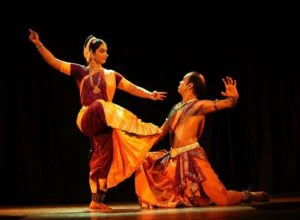
Leave a Reply Cancel reply
Your email address will not be published. Required fields are marked *
Save my name, email, and website in this browser for the next time I comment.
Your Article Library
Essay on indian classical dance (493 words).
ADVERTISEMENTS:
Essay on Indian Classical Dance!
The sculptures of yore are silent evidences of the antiquity of the Indian classical dances traditional sacred text show the close association of religion with dance. Indian dance, like other Indian arts, has always been conscious of the relationship between the human being and God.
The divine concept of the cosmos and the philosophy of Indian thought pervade and form a backdrop to the dance techniques. Dance was a ritual form of worship in temples. The much denigrated devadasis in the temples, in their rituals of worship, kept alive the art form, till a cultural revival brought the dances out of the temples into the theatres of the present.
The principles of Indian classical dance—whatever the style—derive from the Natyashastra (c. 2nd century AD) by Bharatamuni. Natya includes dance, music and drama. Bharatamuni traces the origin of the art form to Brahma. It was Brahma who, on perceiving the growing desire, greed, jealousy, anger, and misery in the world, went into meditation and created a fifth Veda, viz., the Natyaveda, representing the essence of the existent four Vedas.
The intellectual content of the Rig-Veda, the music of the Samaveda, abhinaya or mime from the Yajurveda and the rasa from the Atharvaveda have been brought together in the Natyaveda to embody moral and spiritual truths. Thus the art form is meant not just to entertain but also to instruct and inspire discipline and righteousness.
The dancing Shiva, Nataraja, represents in his art creation, preservation, destruction, release from bondage and the cycle of life and death. Parvati, learning the art from Shiva, in turn taught it to the people of the earth. Whatever the origin, dance is often considered to be a ‘complete art’, at least a composite art enfolding in its range other fine arts—music, of course, besides elements of sculpture, poetry and drama.
There are two basic aspects to Indian classical dance, namely, tandava and lasya. If the former denotes movement and rhythm, the latter denotes grace, bhava and rasa, and abhinaya.
Nritta consists of dance movements in their basic form; nritya is expressional, enacting the sentiments of a particular theme. These are expressed through mudras or gestures and poses. The hasta is a hand gesture representing a word or even an idea. There are 108 karana or fundamental poses.
A famous treatise on dance is Nandikeswara’s Abhinaya Darpana. Later works include Maheshwar Mahapatra’s Abhinaya Chandrika and Jadunath Singh’s Abhinaya Prakash.
Bharata and other writers have emphasised that learning can only come through gurus. The traditions—the sampradaayas—have been taught by gurus to their sishyas through the centuries.
The nayaka-nayaki bhava, symbolic of the human soul surrendering itself as the beloved (nayaki) of the One Lover (nayaka) of the universe, i.e., Divinity, is a common theme of Indian dance. Apparently erotic songs, too, can be interpreted on this higher plane. There are nine rasas: love, heroism, pathos, humour, anger, fear, disgust, wonder and peace.
Related Articles:
- Bharatanatyam: A Classical Dance Forms of India!
- Essay on Indian Classical Music (934 Words)
No comments yet.
Leave a reply click here to cancel reply..
You must be logged in to post a comment.

IMAGES
VIDEO
COMMENTS
Dances of India. Essay No.01. Dance is a series of movements and steps that match the speed and rhythm of music. It is an artistic accompanied by gestures and expressions which explain the theme contained in the music. One can dance alone or with a partner or in a group. Rhythm and movements are basic to dance.
Parai Attam - It is a special type of dance in Tamil Nadu. Men folk play a percussion instrument called 'Parai' and dance to the rhythm they come up with. Traditionally, the dance was performed for various reasons and is one of the oldest dance forms of India. Karagattam - It is an ancient folk dance of Tamil Nadu.
Dance in India include classical (above), semiclassical, folk and tribal. Dance in India comprises numerous styles of dances, generally classified as classical or folk. As with other aspects of Indian culture, different forms of dances originated in different parts of India, developed according to the local traditions and also imbibed elements from other parts of the country.
Bharatanatyam, a pre-eminent Indian classical dance form presumably the oldest classical dance heritage of India is regarded as mother of many other Indian classical dance forms. Conventionally a solo dance performed only by women, it initiated in the Hindu temples of Tamil Nadu and eventually flourished in South India. Theoretical base of this ...
Indian Dance Essay. Introduction. Historically, dance played an important role in the life of Indian people. It should be said that the earliest dance forms originate to the antiquity. ... Kathak is a North Indian dance form which is inextricably bound with classical Hindustani music and the rhythmic nimbleness of the feet is accompanied by the ...
India has many dances, coming from every state in the country. Although, there are only six forms of the classical dances recognised by the country on a national level. They are Bharatnatyam, Kathak, Kathakali, Manipuri, Kuchipudi, and Odissi. Read on to learn about 14 Dance forms of India: Bharatnatyam, Tamil Nadu Kathak, Uttar Pradesh, North India Kathakali, Kerala, South India Manipuri ...
There are 8 classical dance forms in India as per the source and scholars. The Cultural Ministry of India has included Chhau in the list of classical dances making a total of 9 classical dance forms. The 8 basic technicalities that are expressed in the classical dance are given below: Shringar: Love. Hasya: Humorous.
The graceful dance of North India origin ' Kathaa' 'Kahe' so 'Kathak' 'Kahave', the one who tells stories is Kathakaar or Kathak . Also known as 'Natwari Nrutya'. Kathak is one of the most charming dance forms of India. The themes of Kathak revolve around Stories of Ramayan, Mahabharat, and Krishna.
Odissi or Orissi is one of the pre-eminent classical dance forms of India which originated in the Hindu temples of the eastern coastal state of Odisha in India. Its theoretical base trace back to 'Natya Shastra', the ancient Sanskrit Hindu text on the performing arts. Age-old tradition of Odissi is manifested from Odisha Hindu temples and ...
ESSAY A new stage, a new audience How Modern India Reinvented Classical Dance In the first of a two-part series, eminent public intellectual Jawhar Sircar takes a look at the evolution of ancient Indian dance forms that accentuated classical traditions while also reconditioning them for modern India. 24 • October 2019 NCPA The very term ...
Get original essay. In my country, India, there are different types of traditional dances like Kathakali, Kathak, Manipuri, Odissi, Kuchipudi, and Bharat Natyam. Bharat Natyam is the most traditional dance of Indian culture. Bharat Natyam is one of the oldest and most popular of the Indian classical dance forms.
Heavy jewellery and makeup are ordinary for Bharatnatyam dancers. Some of the famous name in the dance field include Rukmini Devi, Padma Subrahmanyam, Alarmel Valli, Yamini Krishnamurthy and ...
Published: Mar 1, 2019. The revival of classical indian dance forms in the 1900s was closely linked to lndia's struggle to overthrow British rule. Through the non-violent, spiritual leadership of Mahatma Gandhi, freedom became a reality and democracy became the political choice. Indians increasingly transformed from their medieval, feudal past ...
Its origins are believed to be by Srimanta Sankardev. He was a scholar and saint of Bhakti movement of 15 th century. Sattriya Dance Form. 7. Manipuri. Manipuri dance form is one of the major classical dance forms of India; its origins are believed to be from Manipur. The theme of Manipuri dance is based on Radha and Krishna's Rasleela.
Download. Essay, Pages 4 (784 words) Views. 1857. Dance in India, is rooted in longstanding tradition. This vast Indian sub-continent has given birth to varied forms of dancing. Each of them is shaped by the influences of a particular period and environment. These pristine forms have been preserved through the centuries, to become a part of our ...
6. Classical Dance of Manipur - Manipuri. 7. Classical Dance of Assam - Sattriya. Let's read about them in detail. 1. Dance of Tamil Nadu - Bharatanatyam. A small district in Tamil Nadu - Thanjavur or Tanjore is said to be the birthplace of Bharatanatyam. Earlier it was called Sadira Attam or Dasi Attam.
In Potomac, Maryland, Deepti Mukund Navile runs a dance school out of her basement. She teaches Bharatanatyam, one of 9 classical dance styles recognized by India's Ministry of Culture.
The Indian community disapproved such ban and as the Indian freedom movement progressed steadily during the early 20th century, an effort to revive Indian culture and tradition became strong among Indians. Many classical art revivalists joined hands between 1920 and 1950 in reviving the different ancient classical dance forms.
India is a land which is rich in cultural diversity.Its people live a life filled with dance, music, delicacies and festivities.The country's diversity is reflected in its varied cuisine, music and most importantly in the beautiful dance forms.. Classical dance forms of India, also known as Shastriya Nritya, come from the words, Shastriya meaning classical and Nritya meaning the act of dancing.
An illustration of the Manipuri Raas Leela Dance (Meitei: Jagoi Raas, Raas Jagoi), one of the officially recognised classical dance forms of India, depicted on a postage stamp from Armenia.. Indian classical dance, or Shastriya Nritya, is an umbrella term for different regionally-specific Indian classical dance traditions, rooted in predominantly Hindu musical theatre performance, the theory ...
Essay On Classical Dance Of India. Satisfactory Essays. 830 Words. 4 Pages. Open Document. Bharatha Natyam——Classical Dance in India. Dance has a very long history in India, and just like religion, it is derived from myths and legends. However, the most credible argument is that India's dance style originated from ancient worship and ...
Download. Essay, Pages 6 (1363 words) Views. 5008. India, a land of diverse cultures and rich heritage, showcases a myriad of dances that echo through various corners of the country. These dances not only serve as a source of entertainment but also act as portals to the past, narrating tales of ancient Indian history.
Dance was a ritual form of worship in temples. The much denigrated devadasis in the temples, in their rituals of worship, kept alive the art form, till a cultural revival brought the dances out of the temples into the theatres of the present. The principles of Indian classical dance—whatever the style—derive from the Natyashastra (c. 2nd ...
Check out this FREE essay on Indian Dance Forms ️ and use it to write your own unique paper. New York Essays - database with more than 65.000 college essays for A+ grades